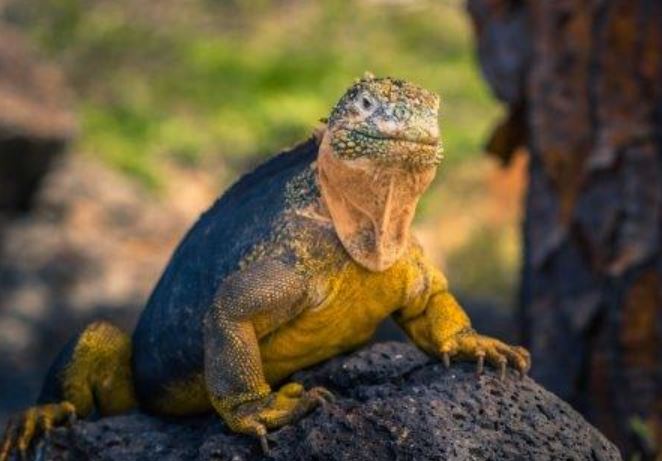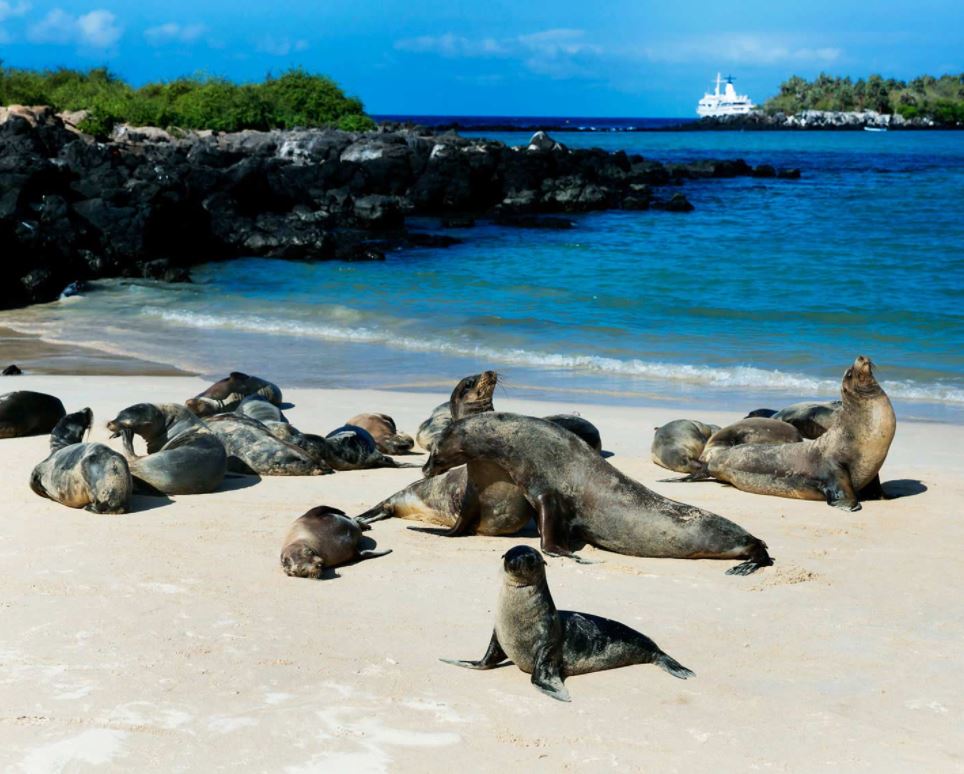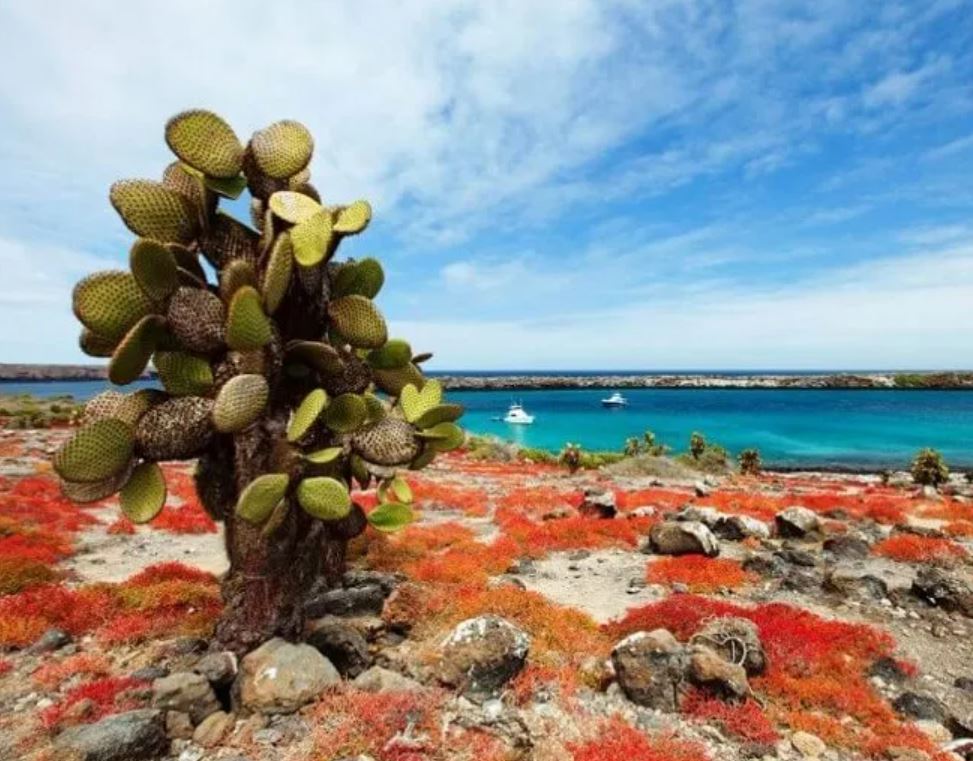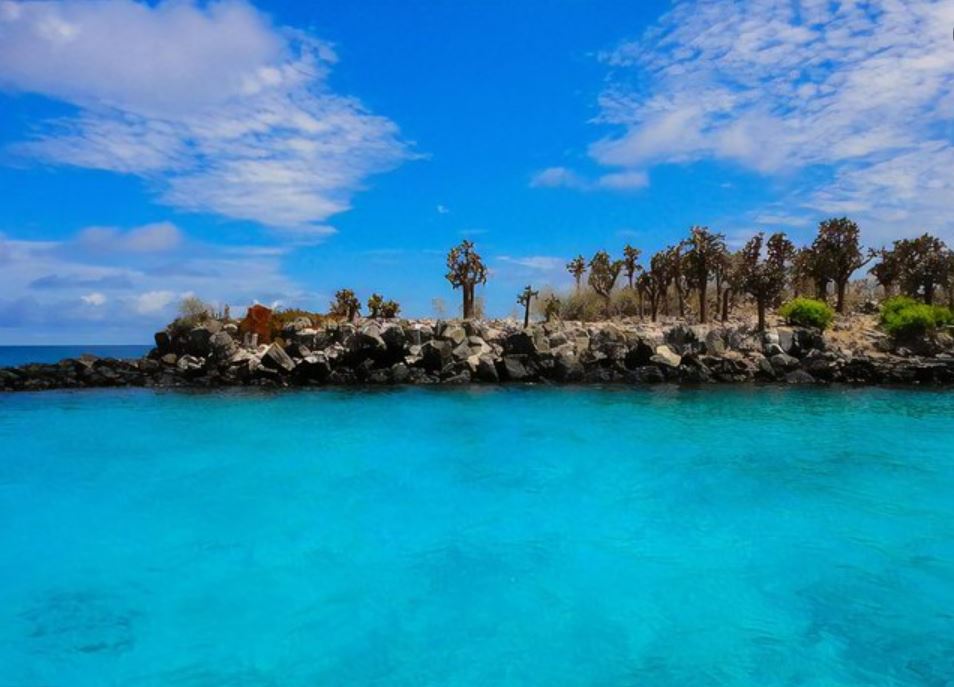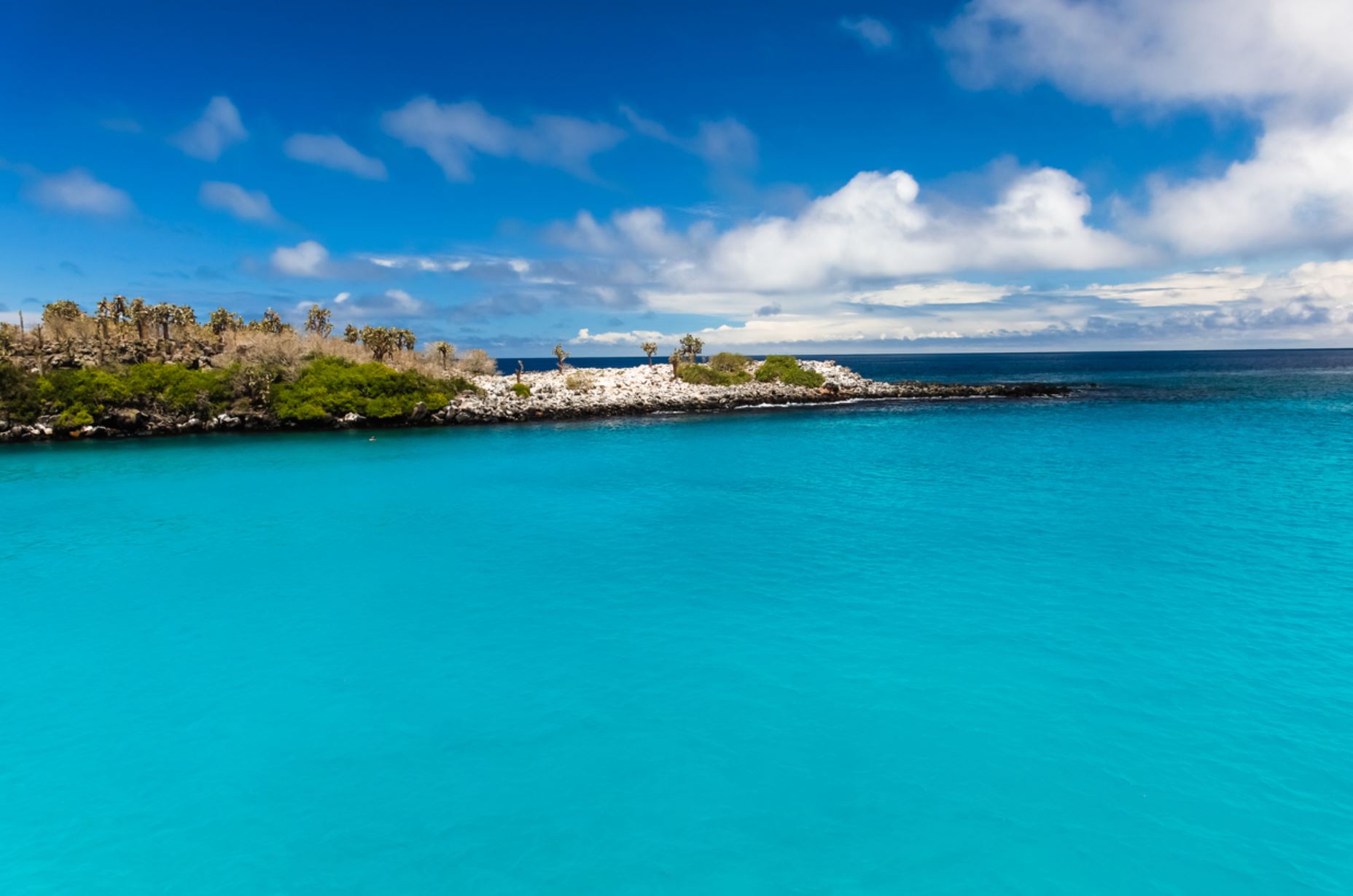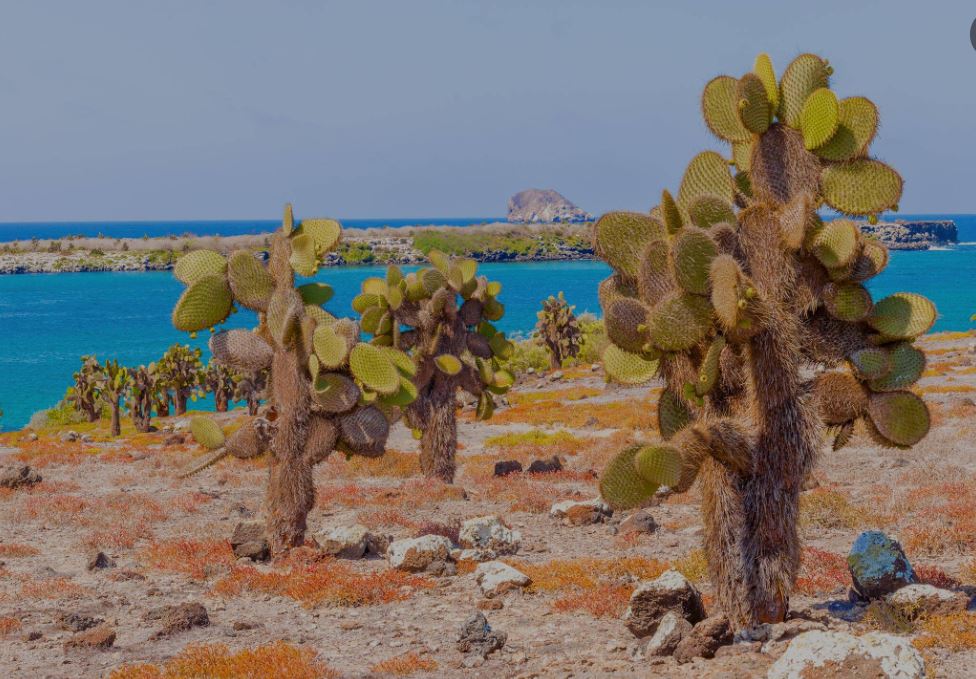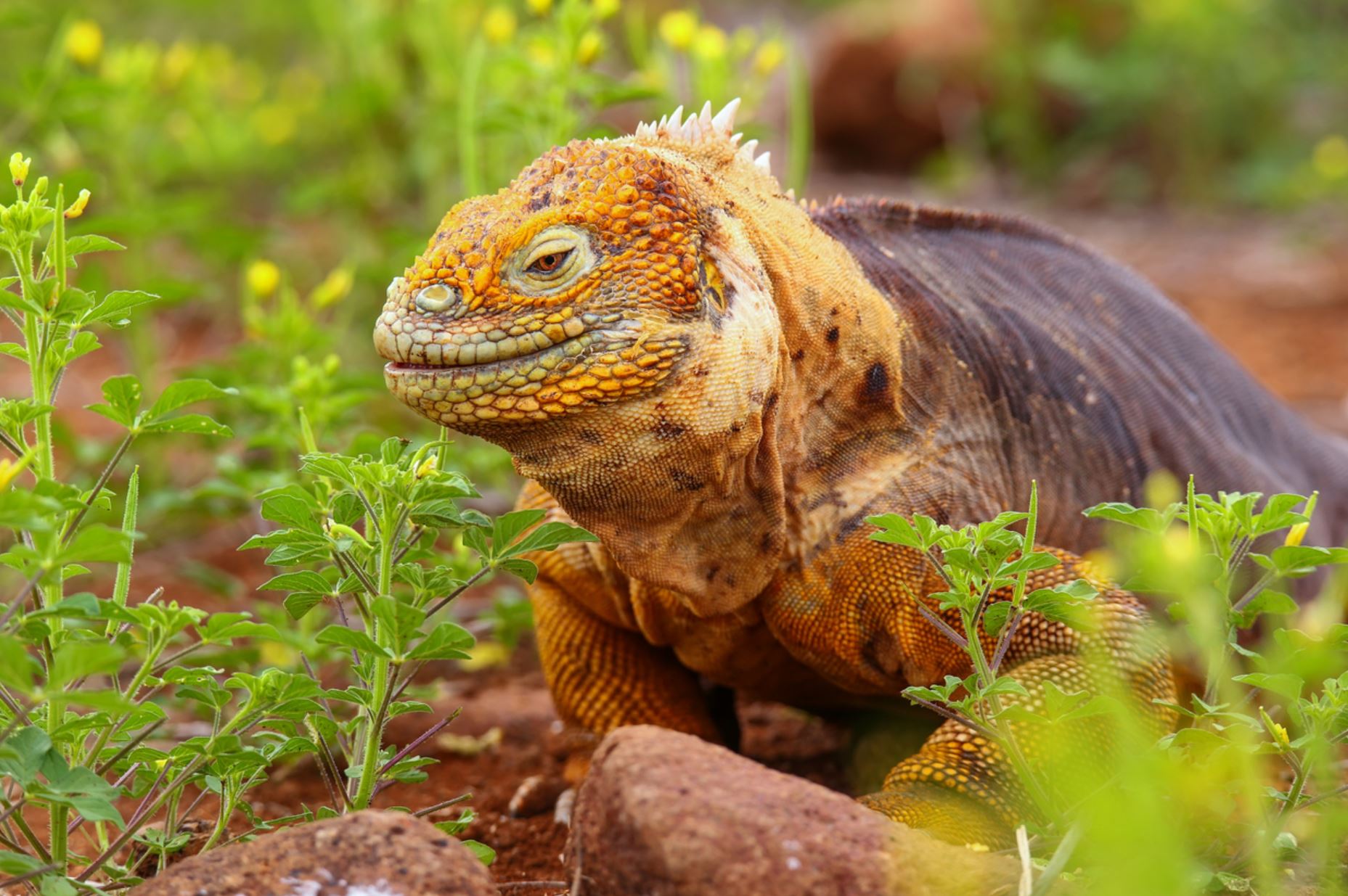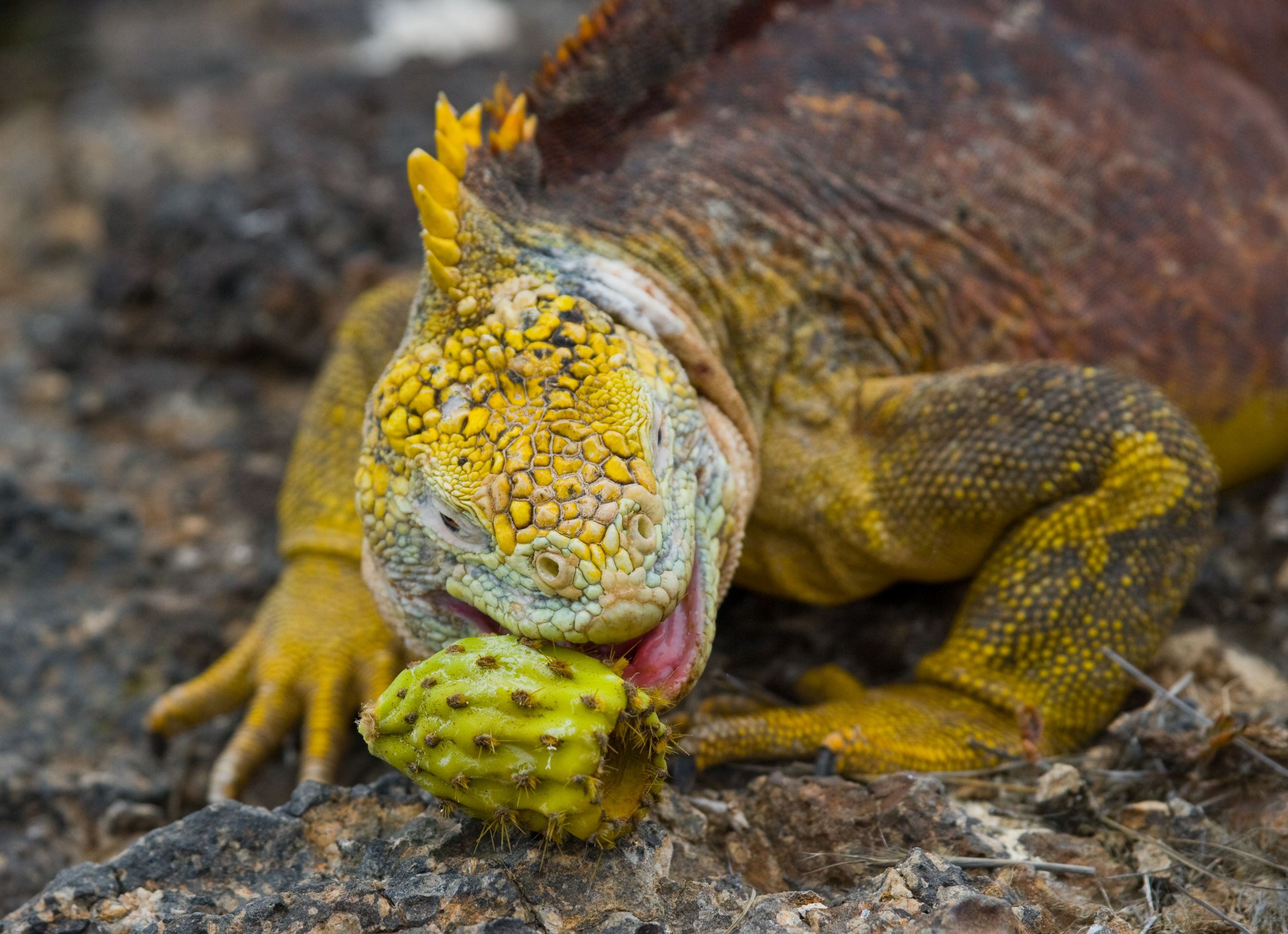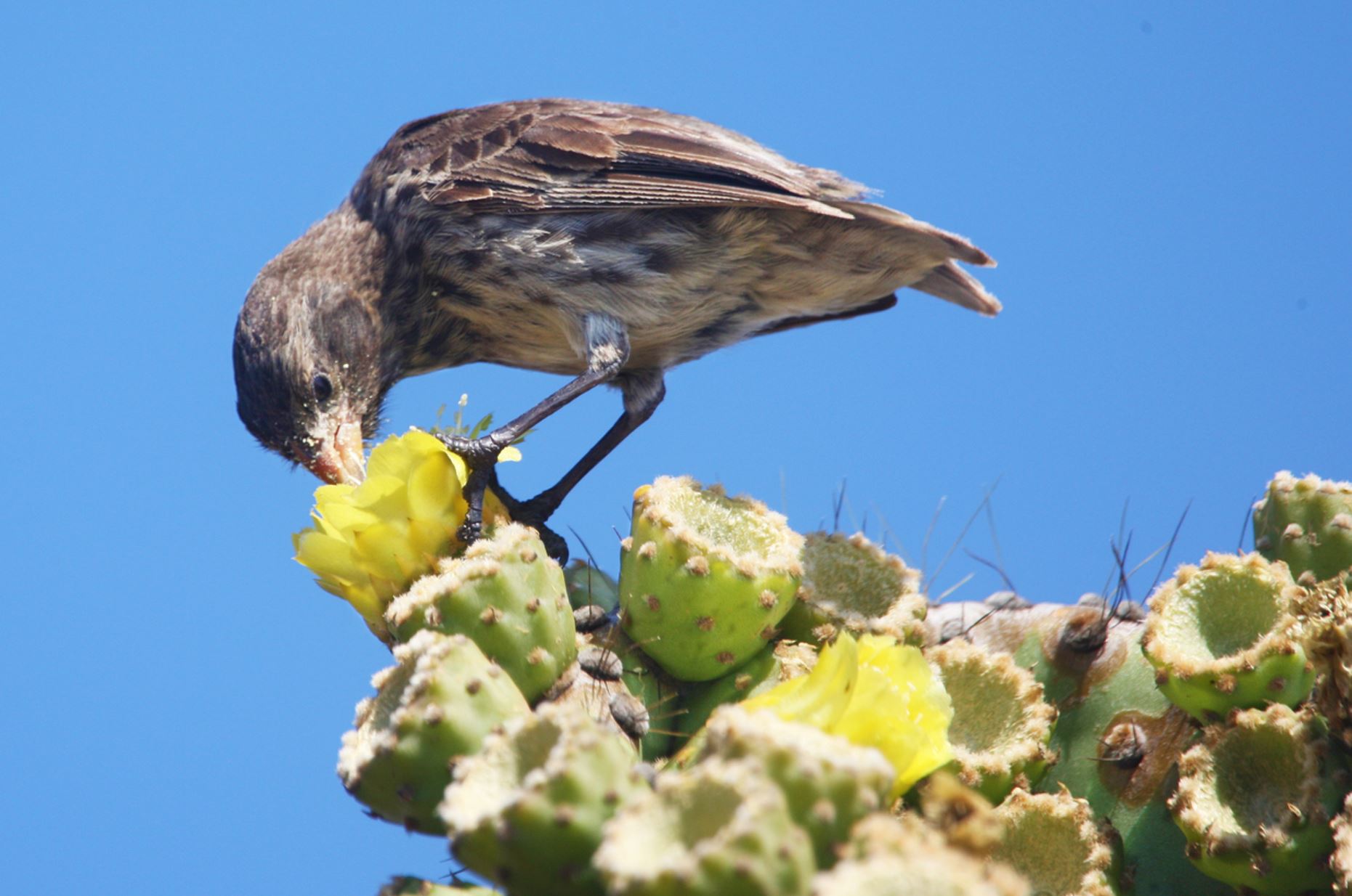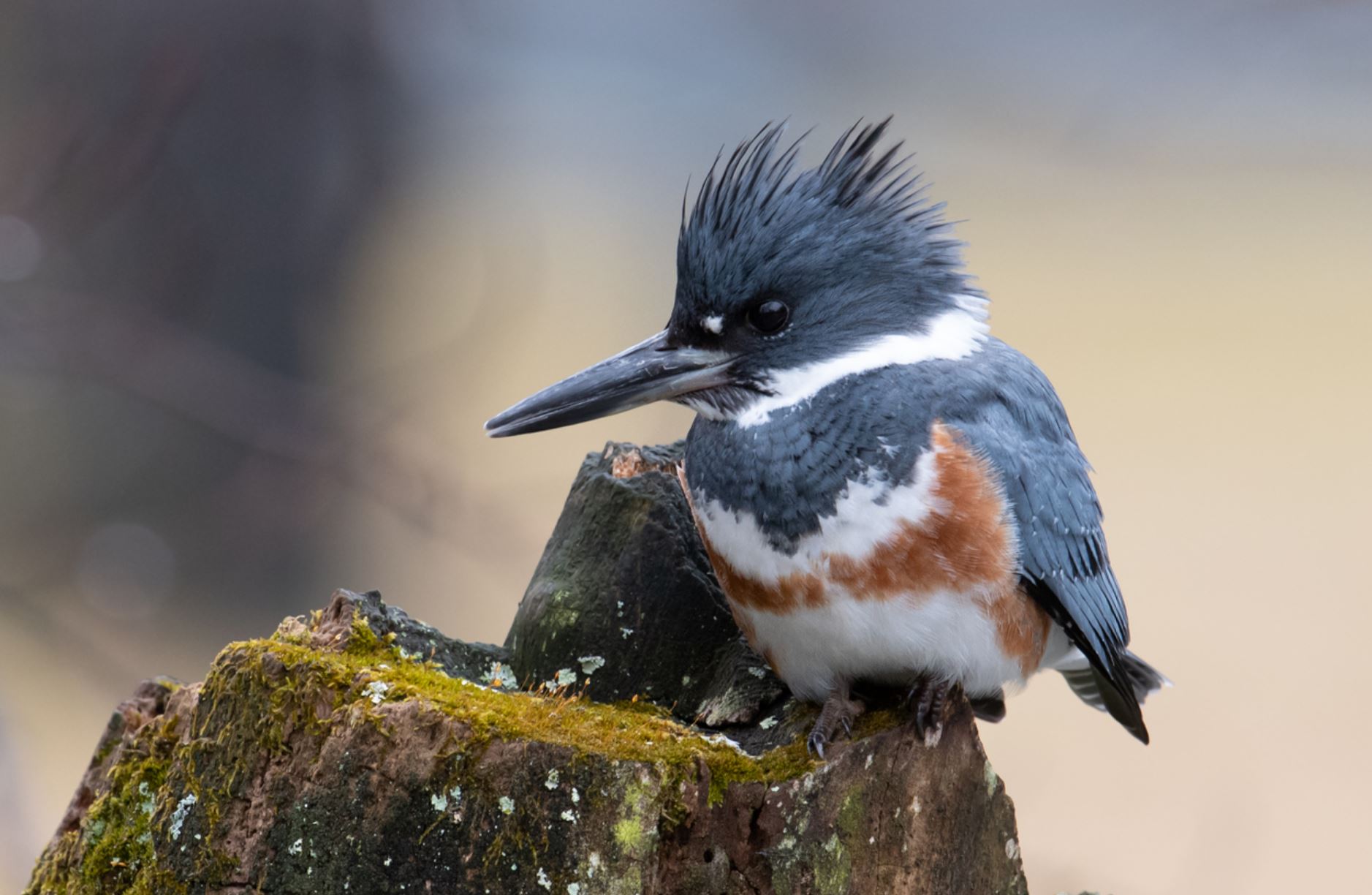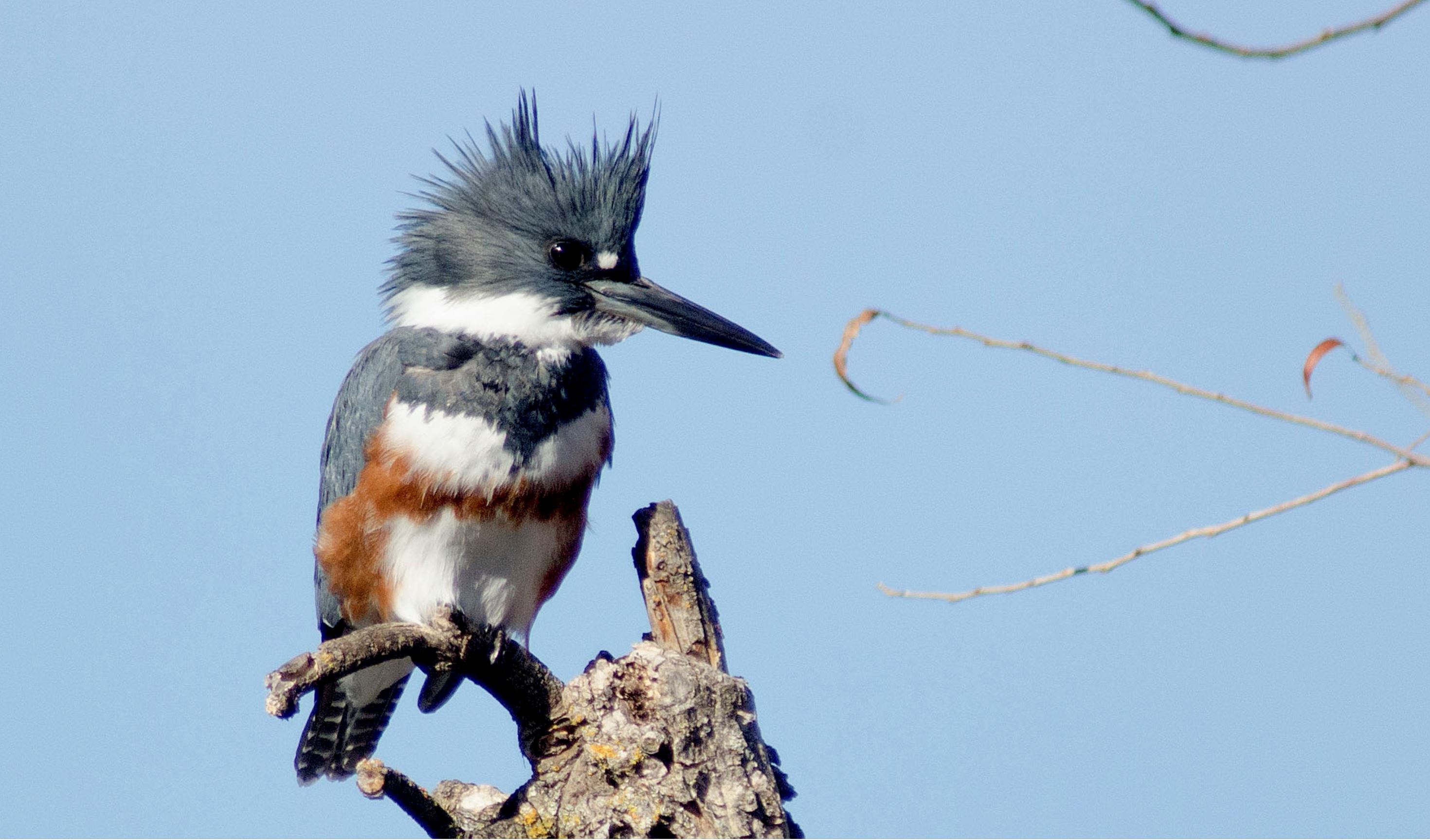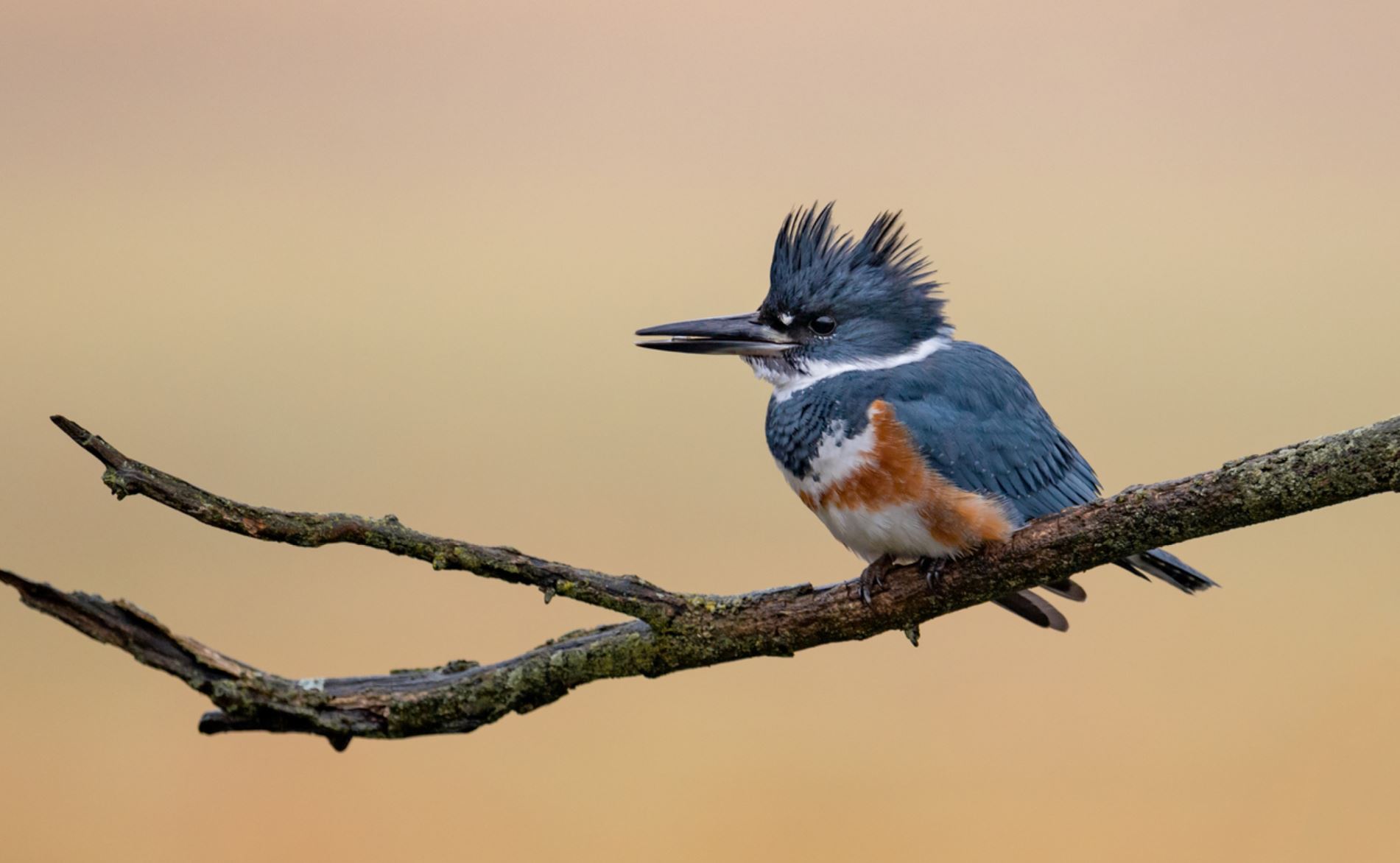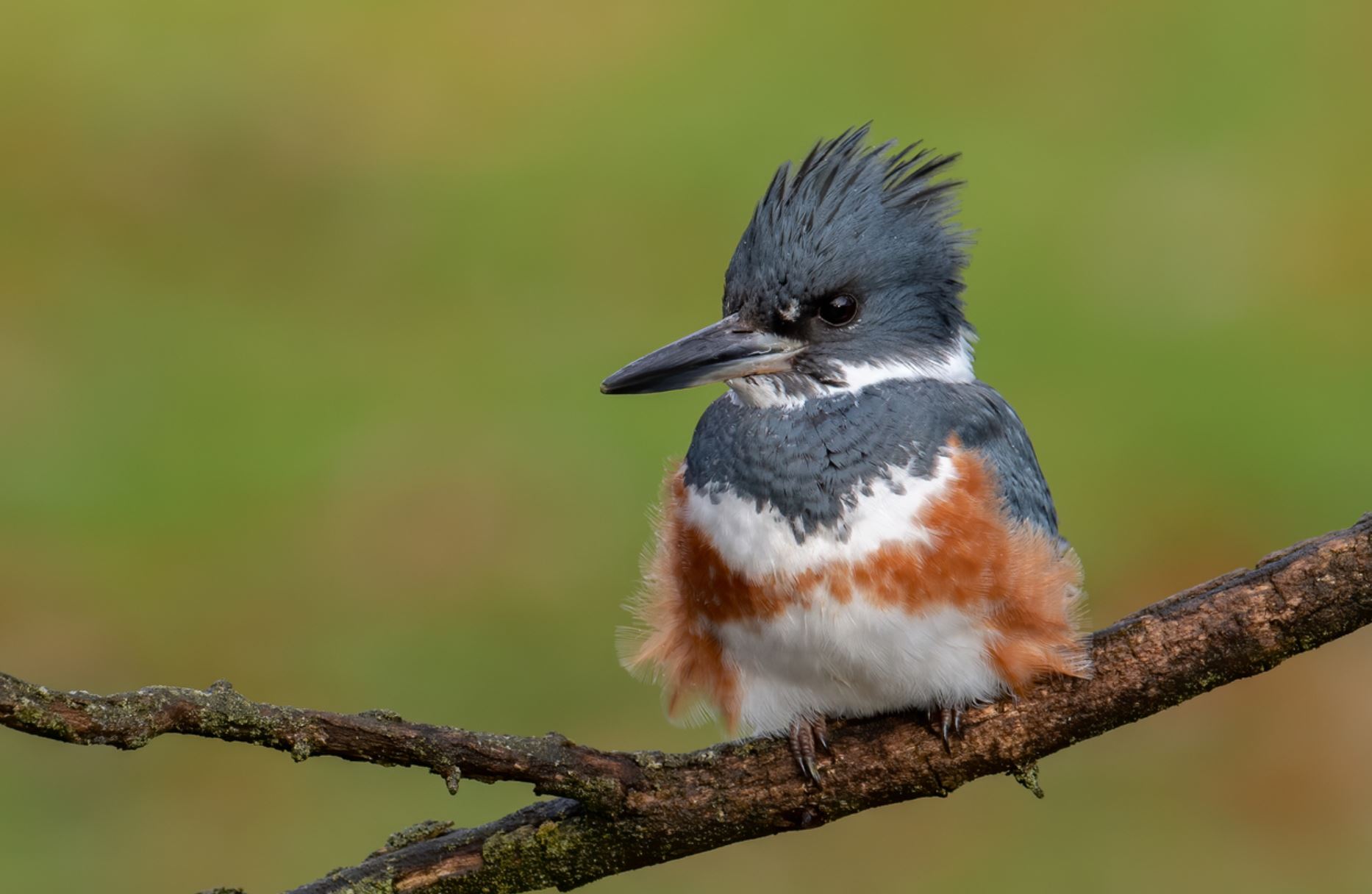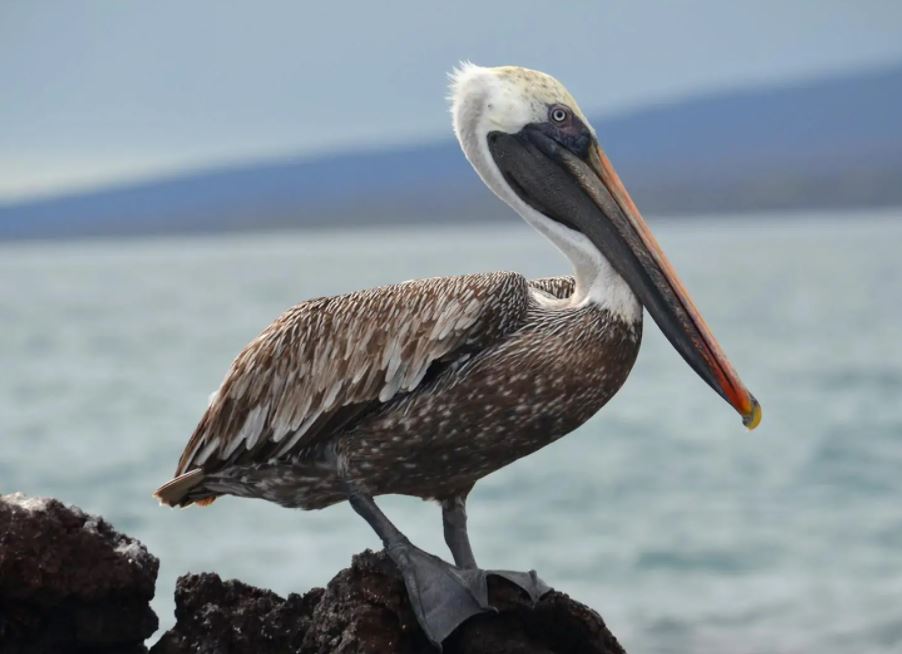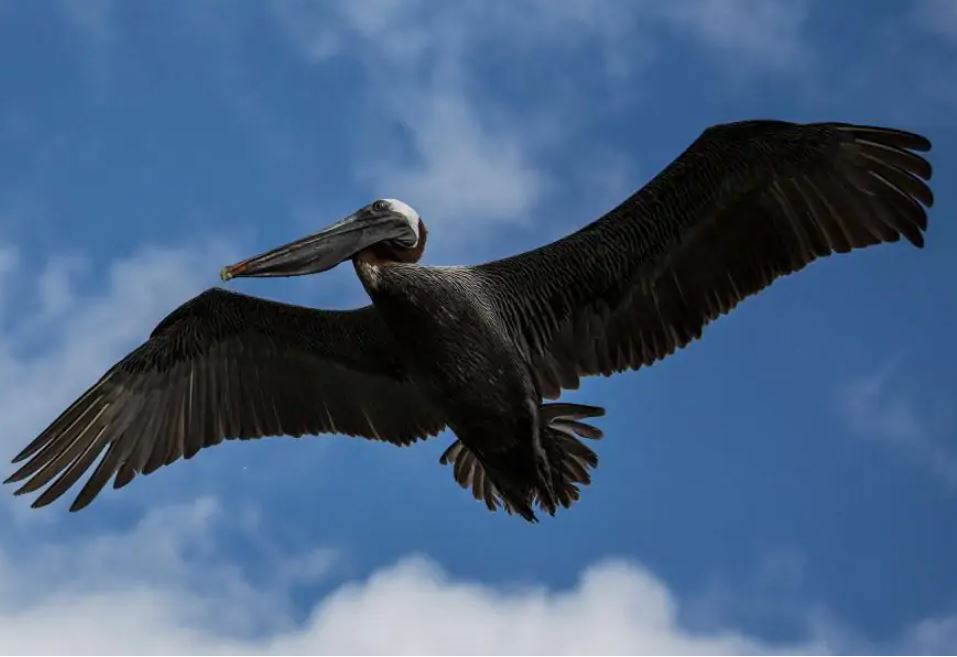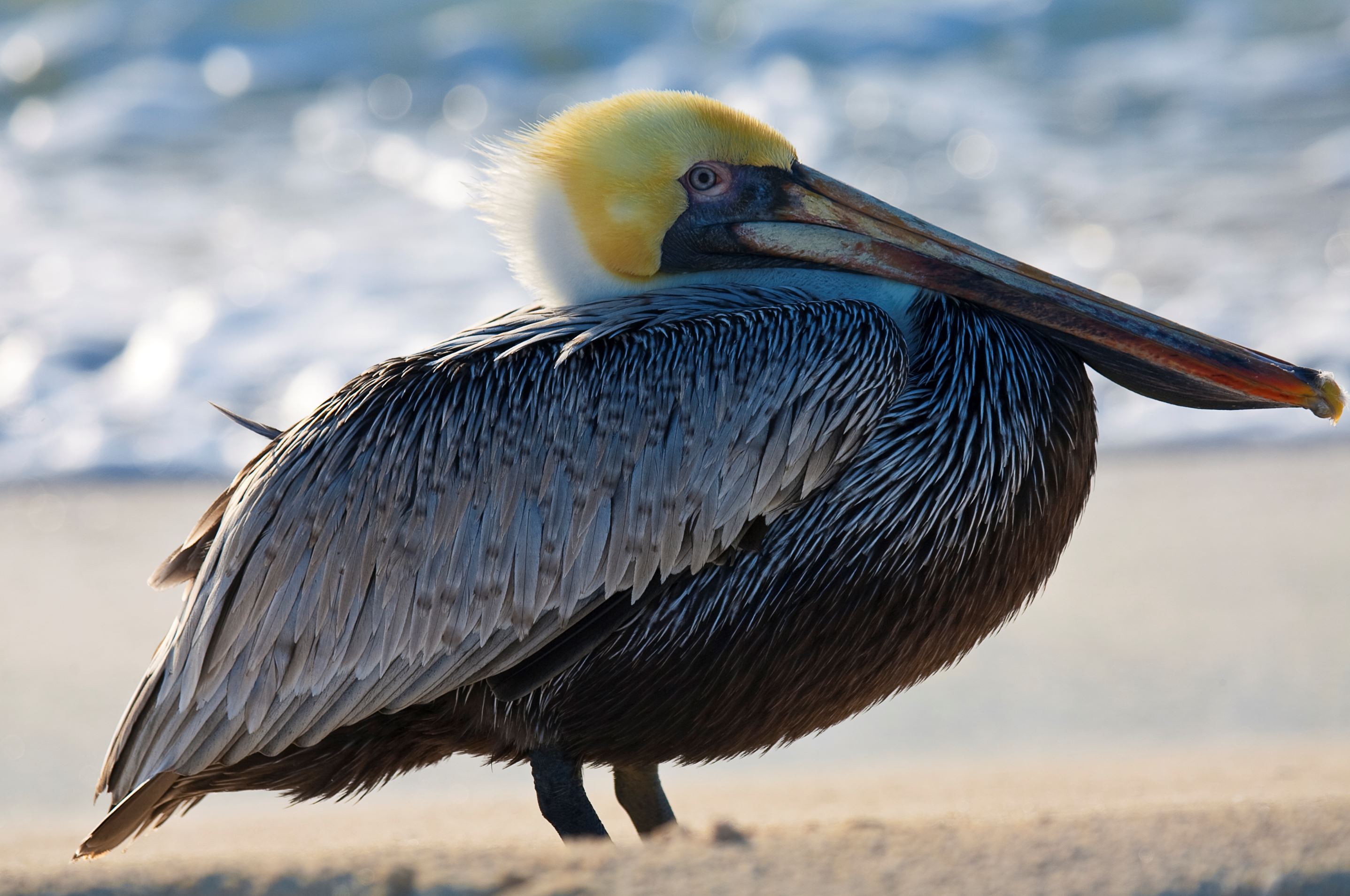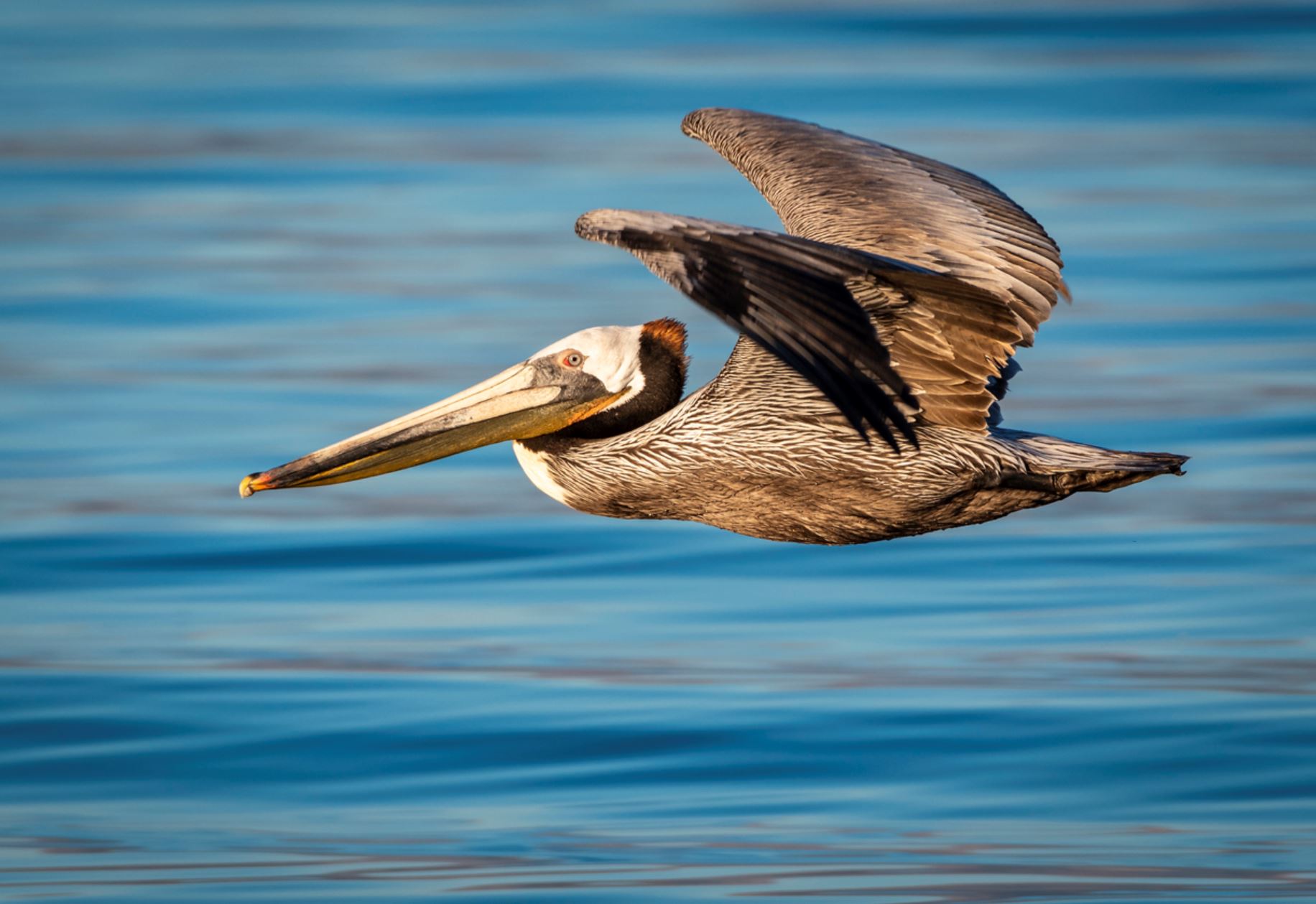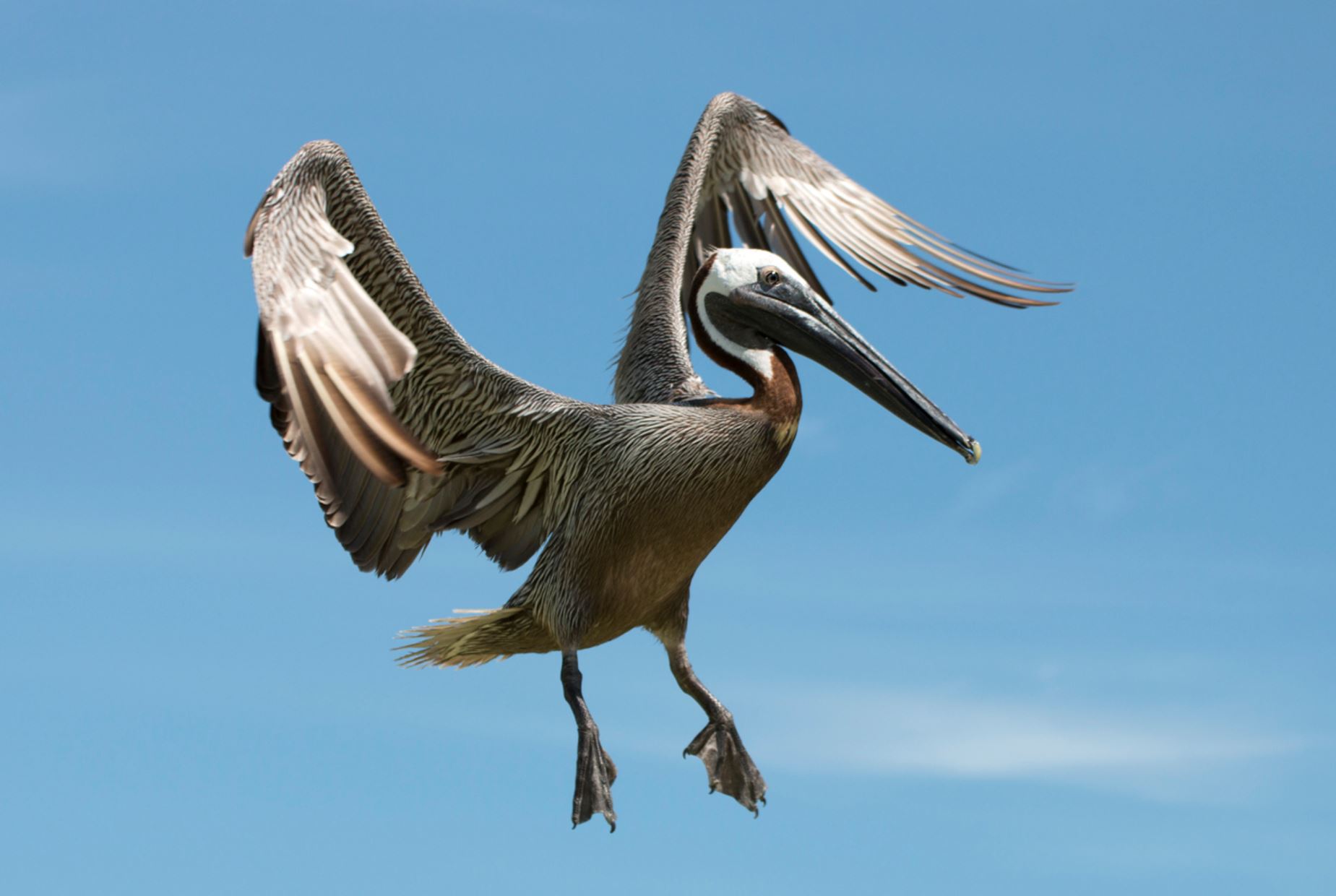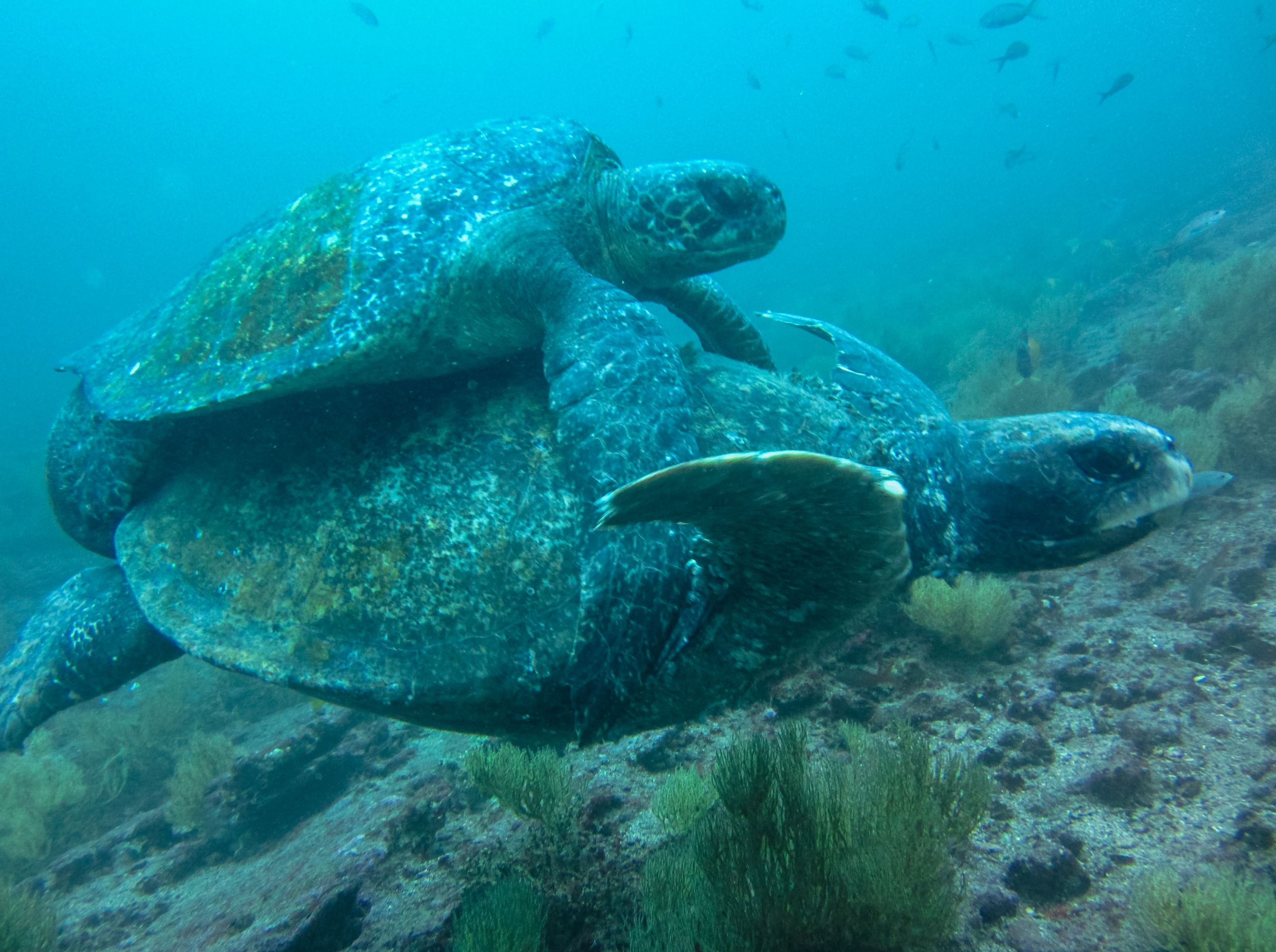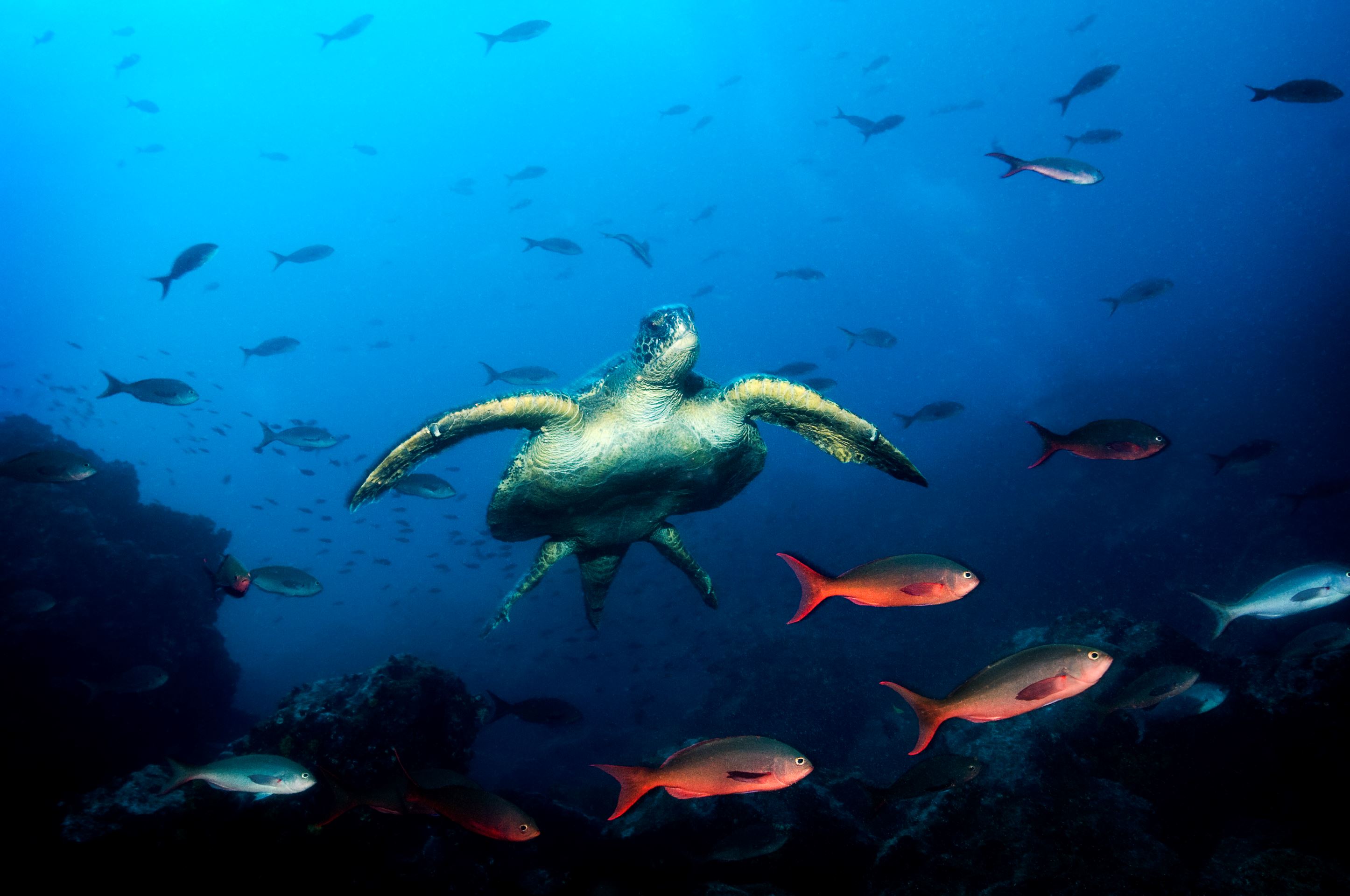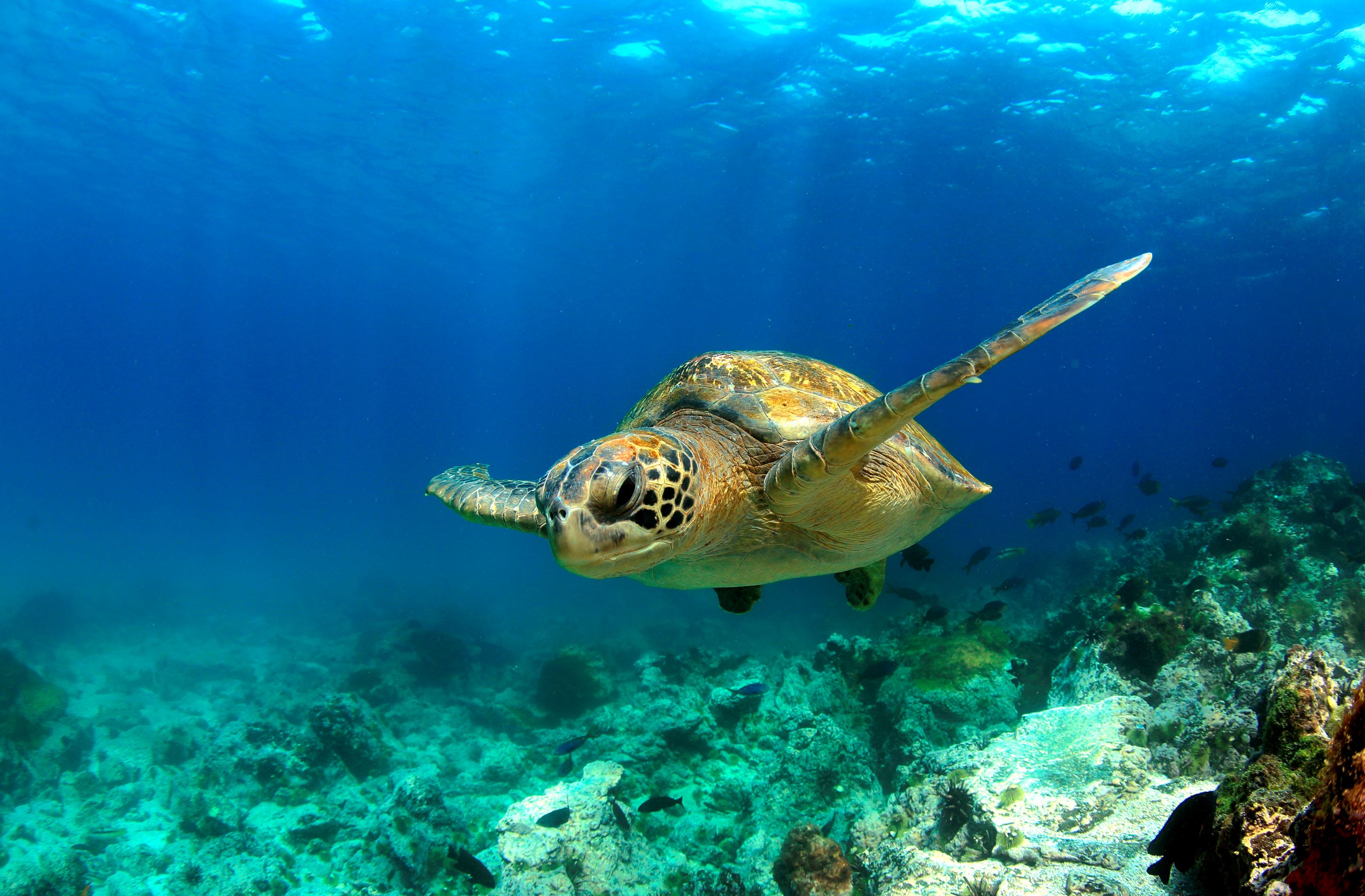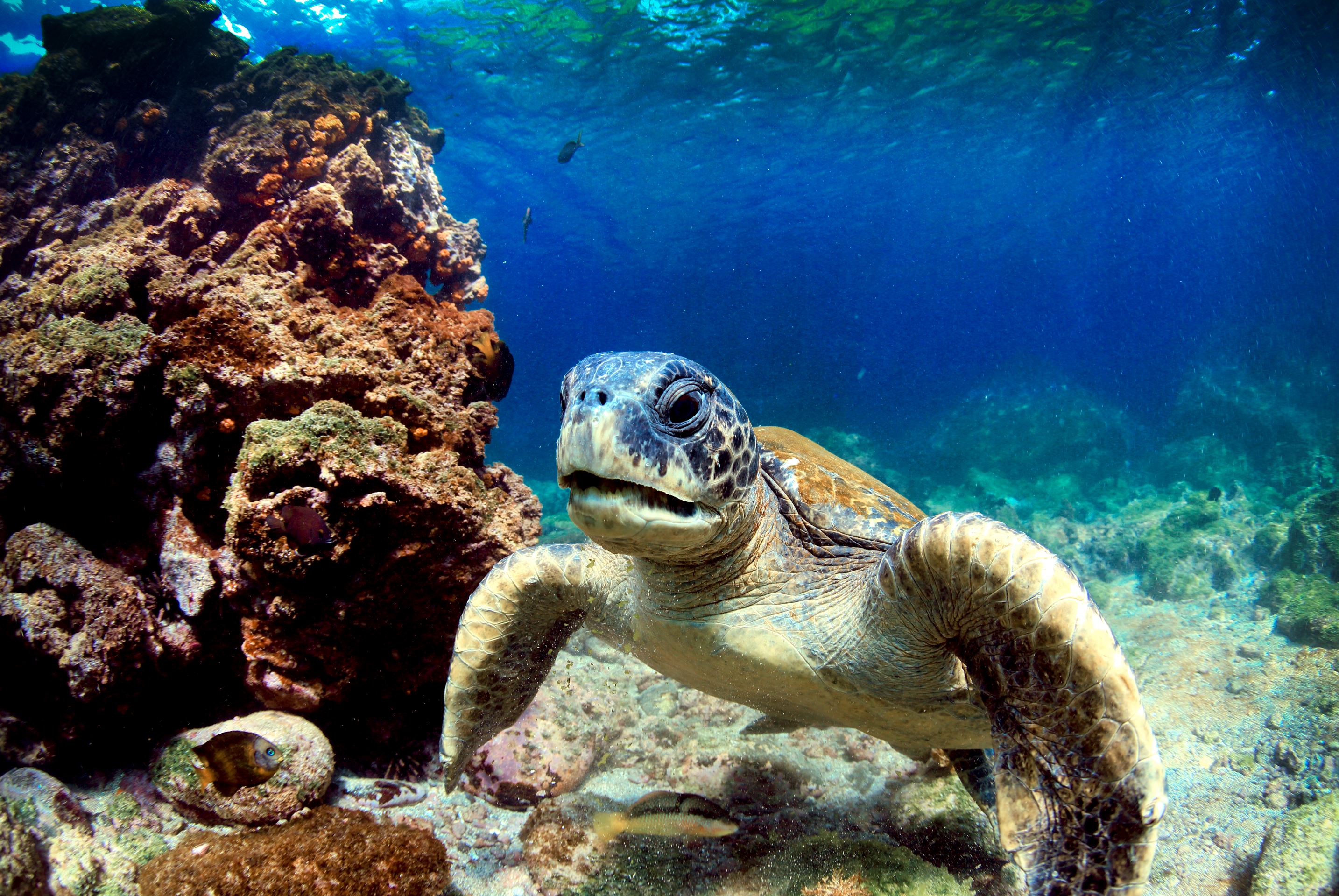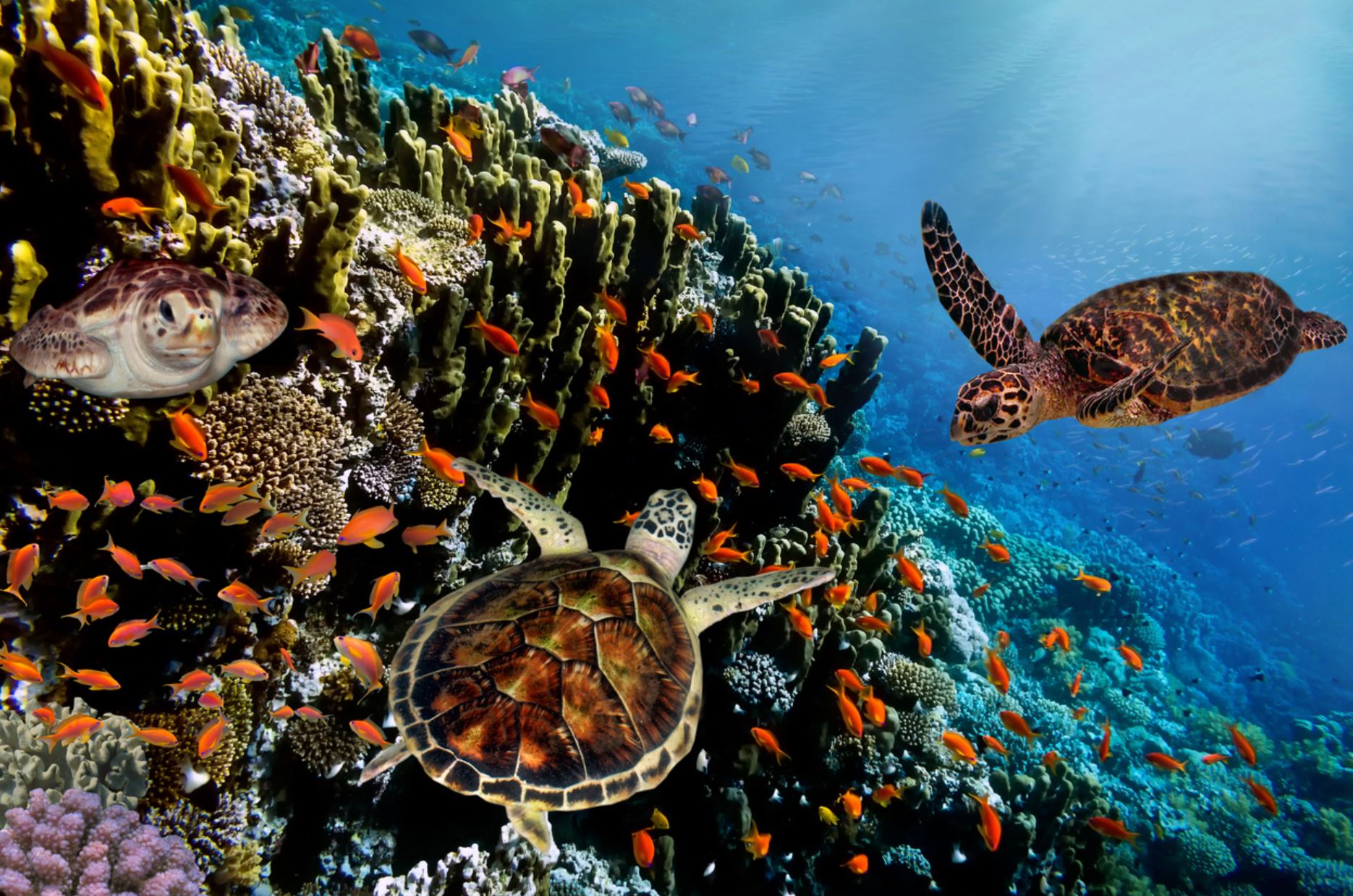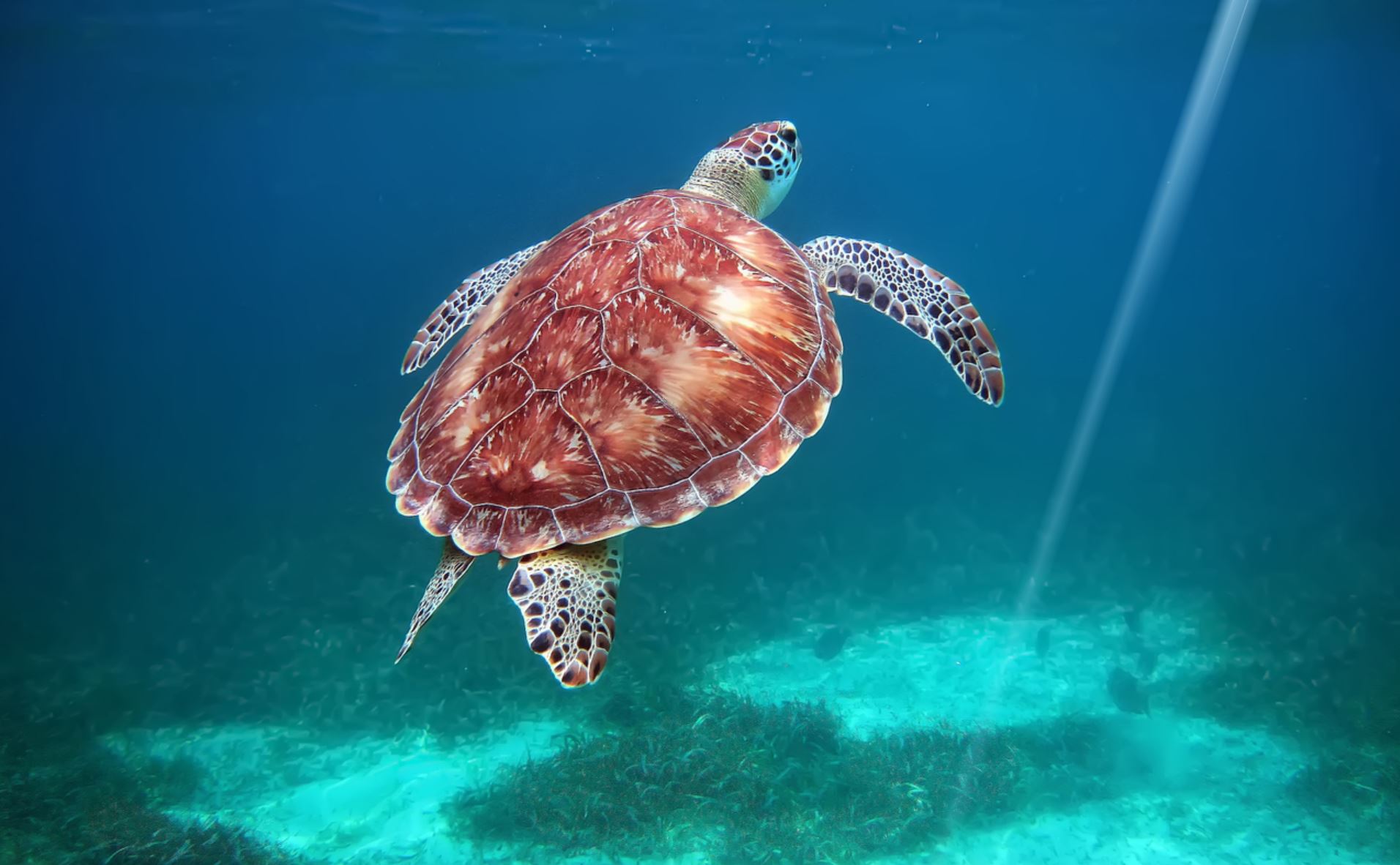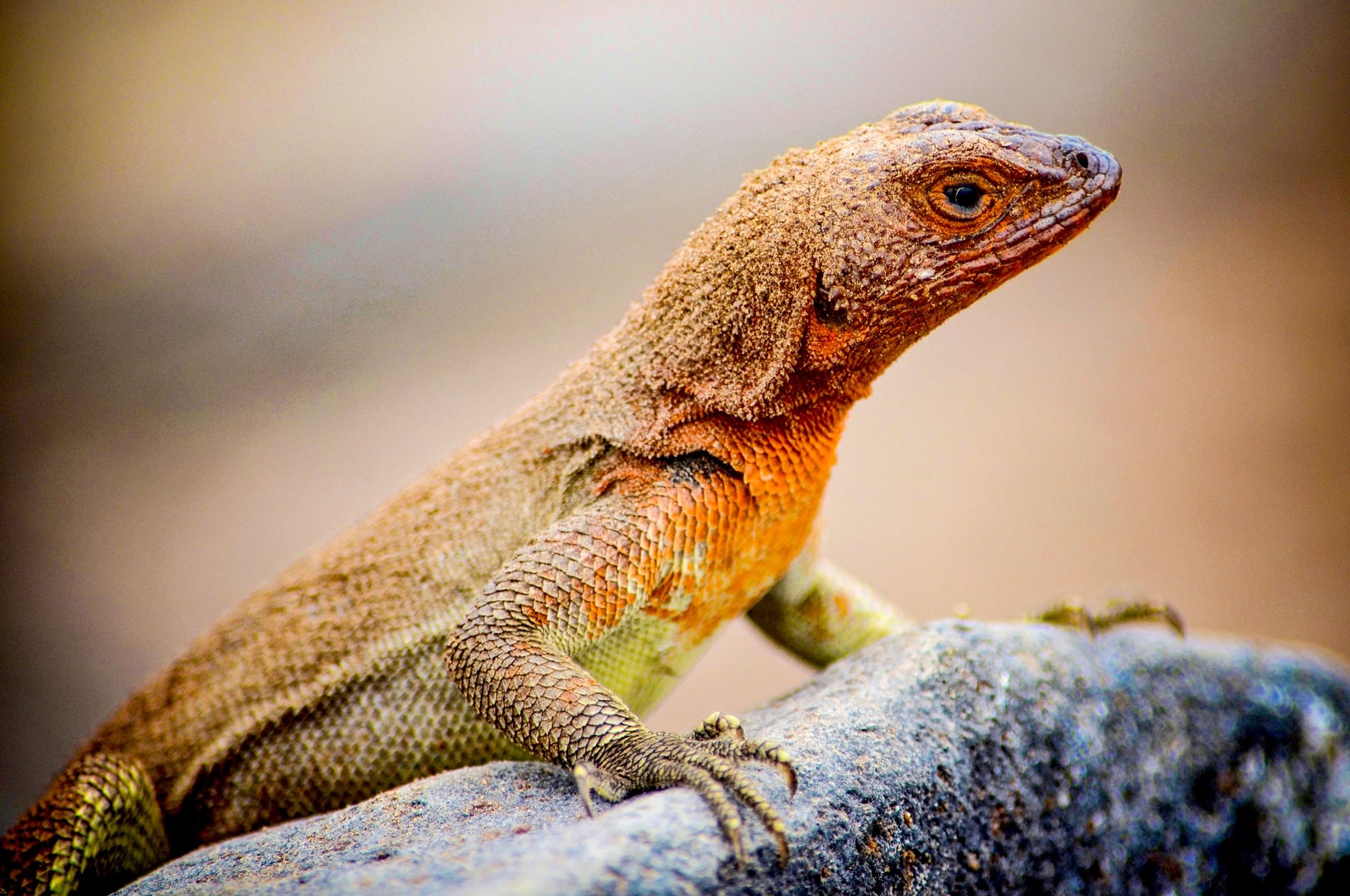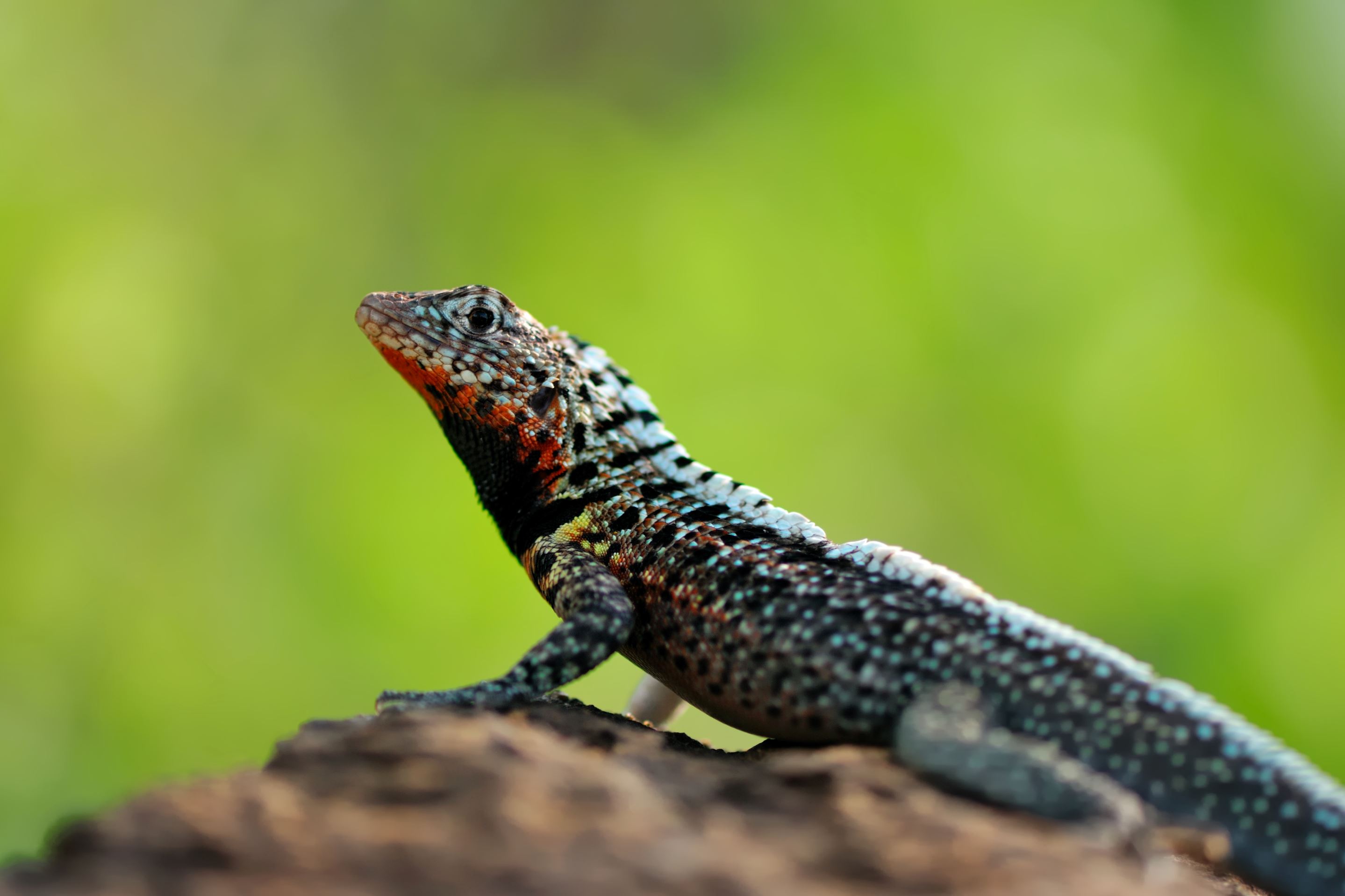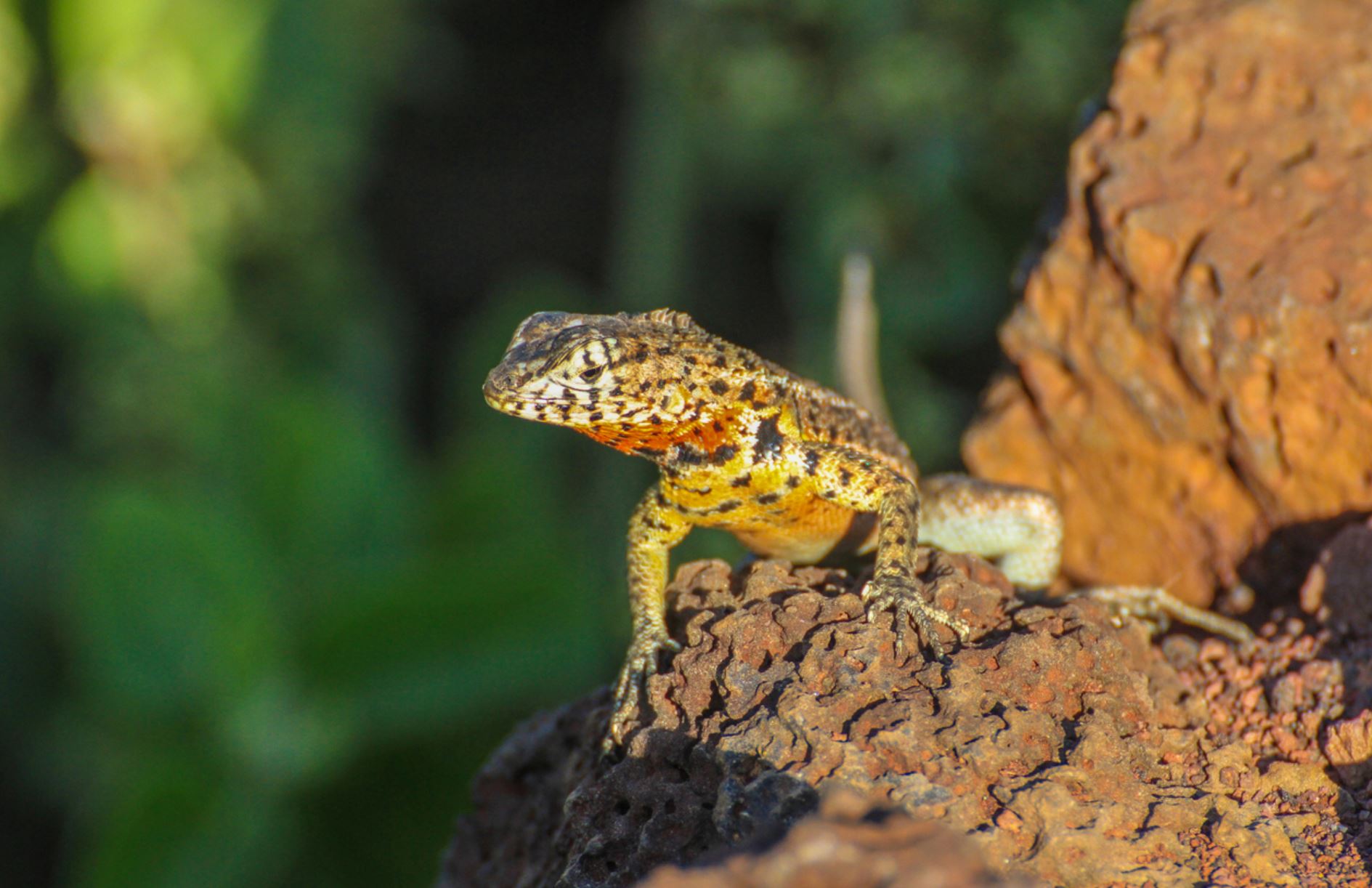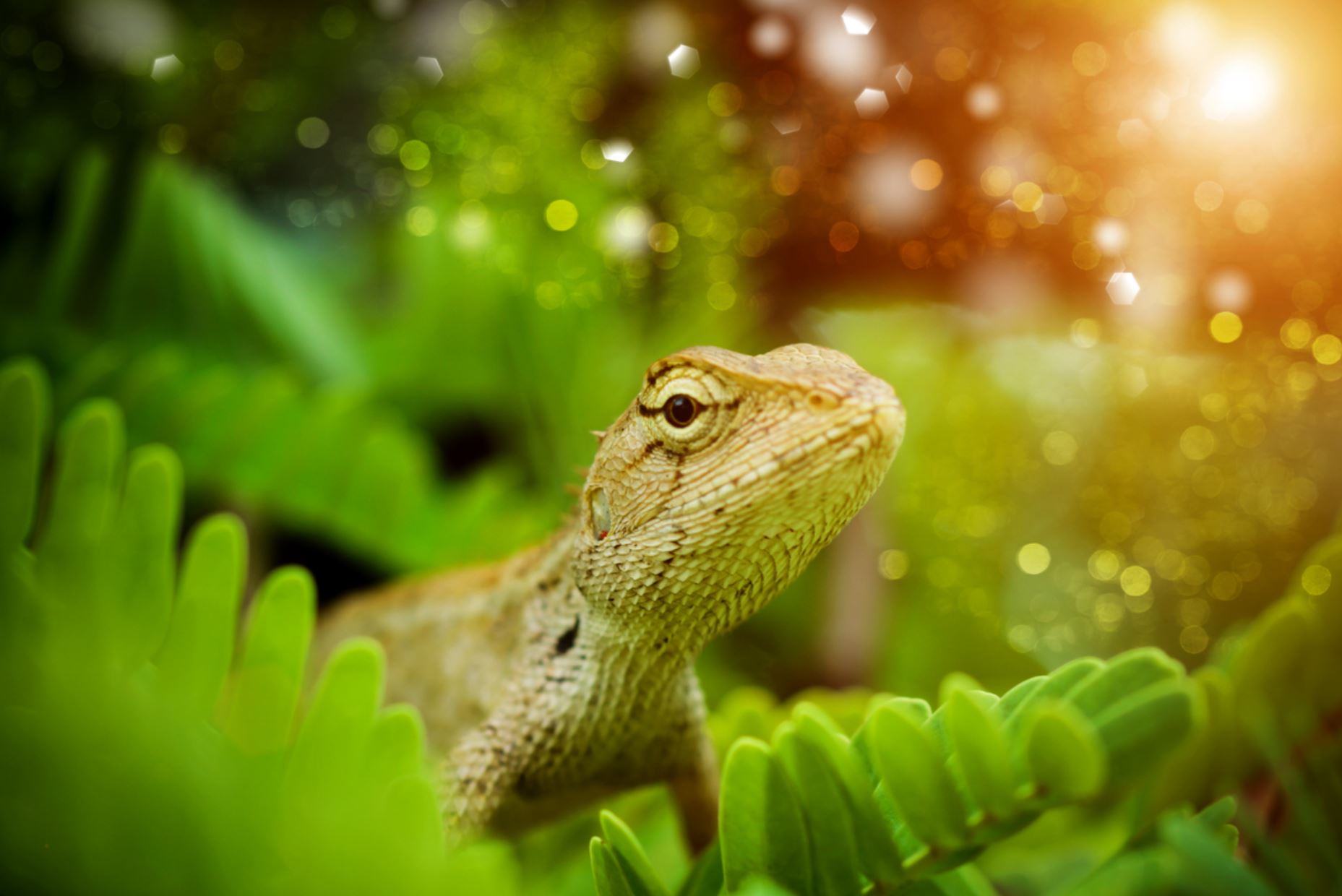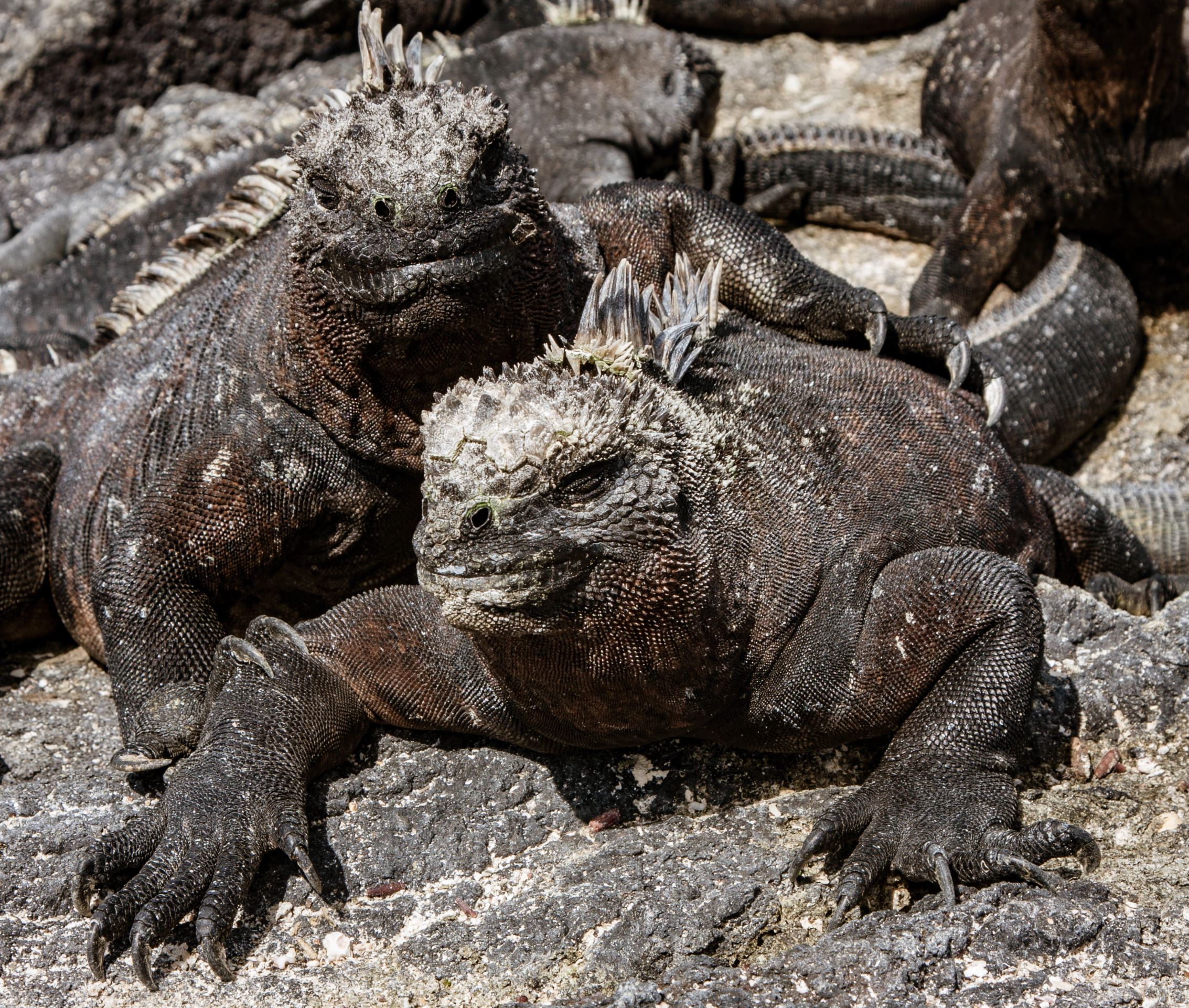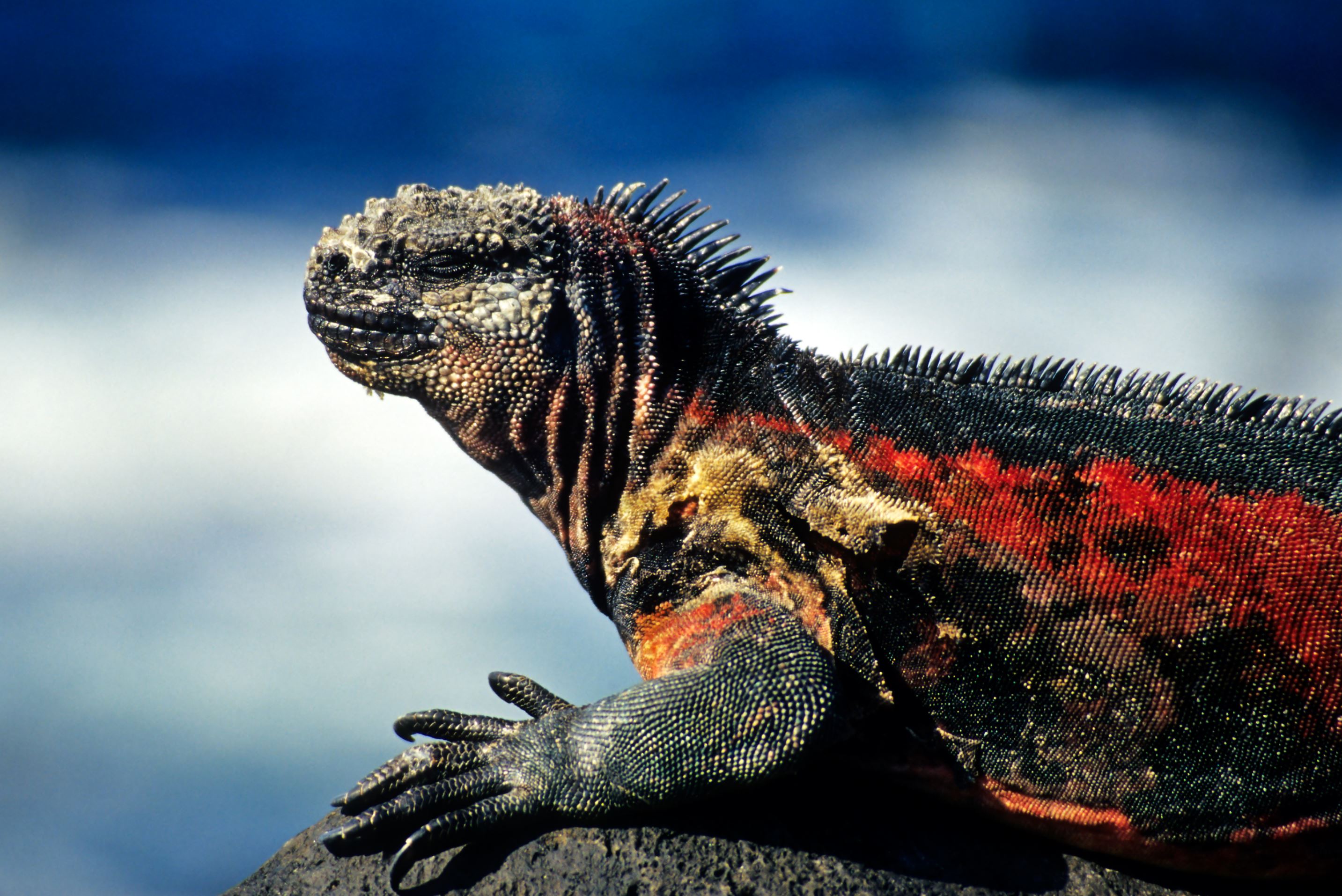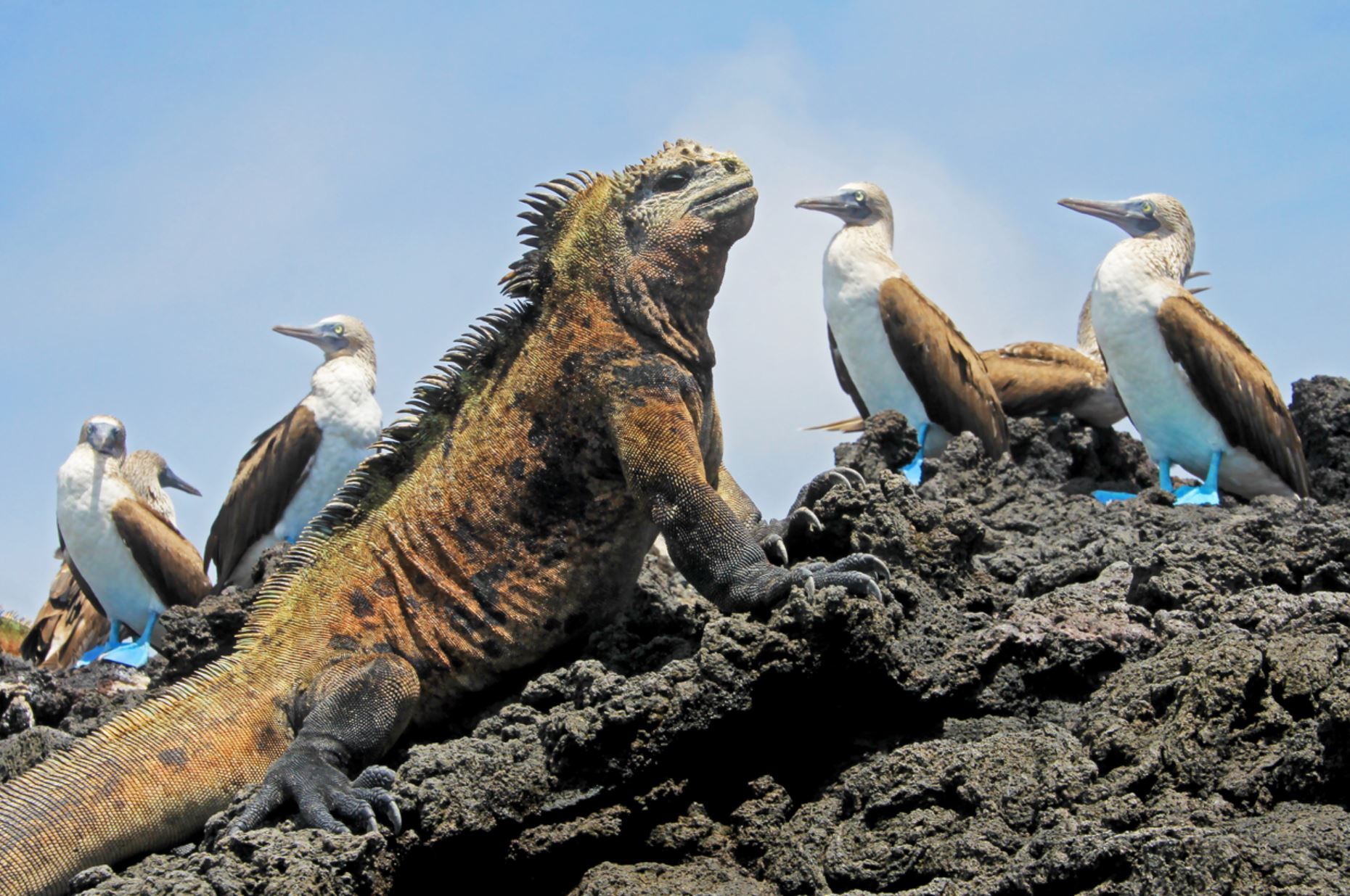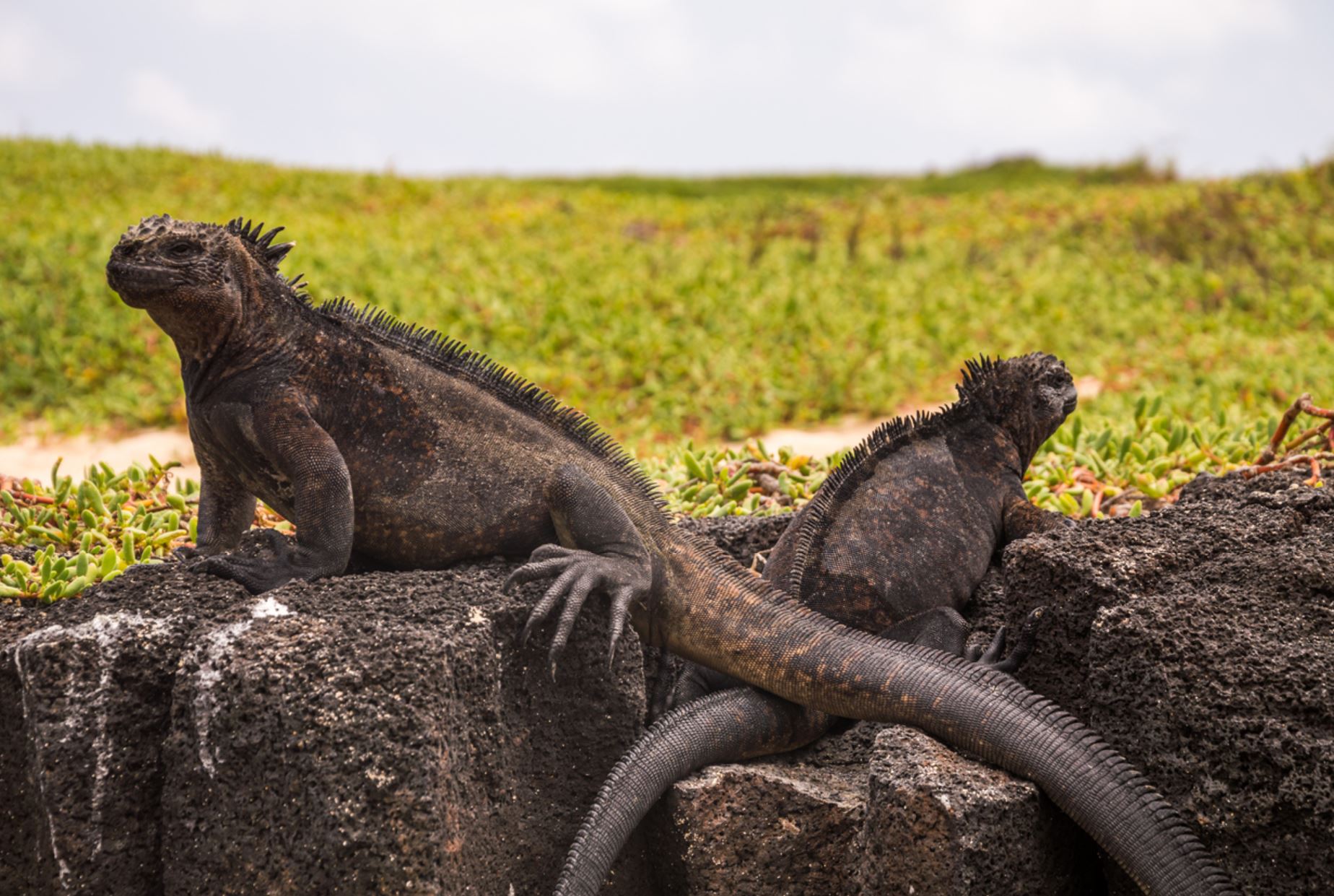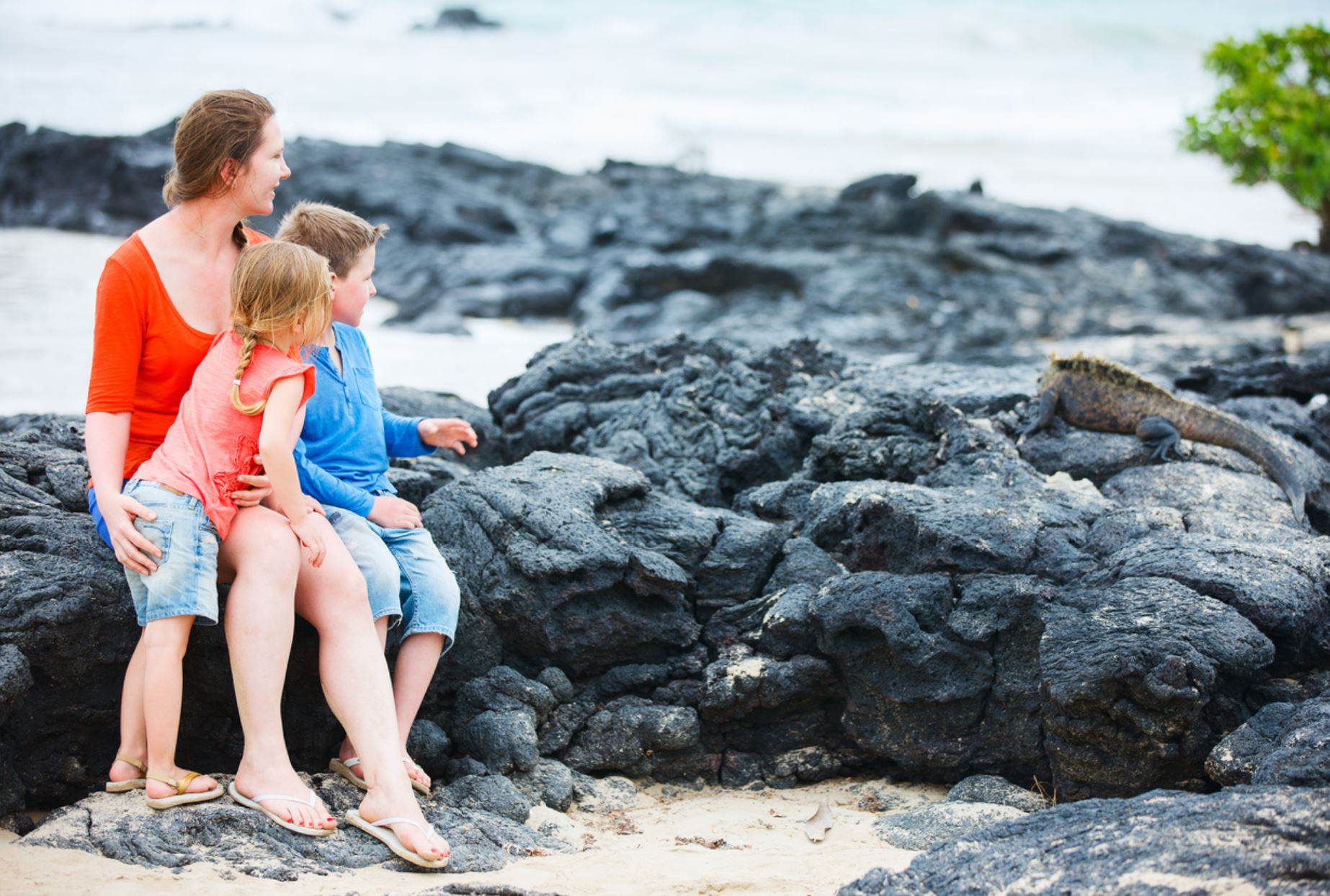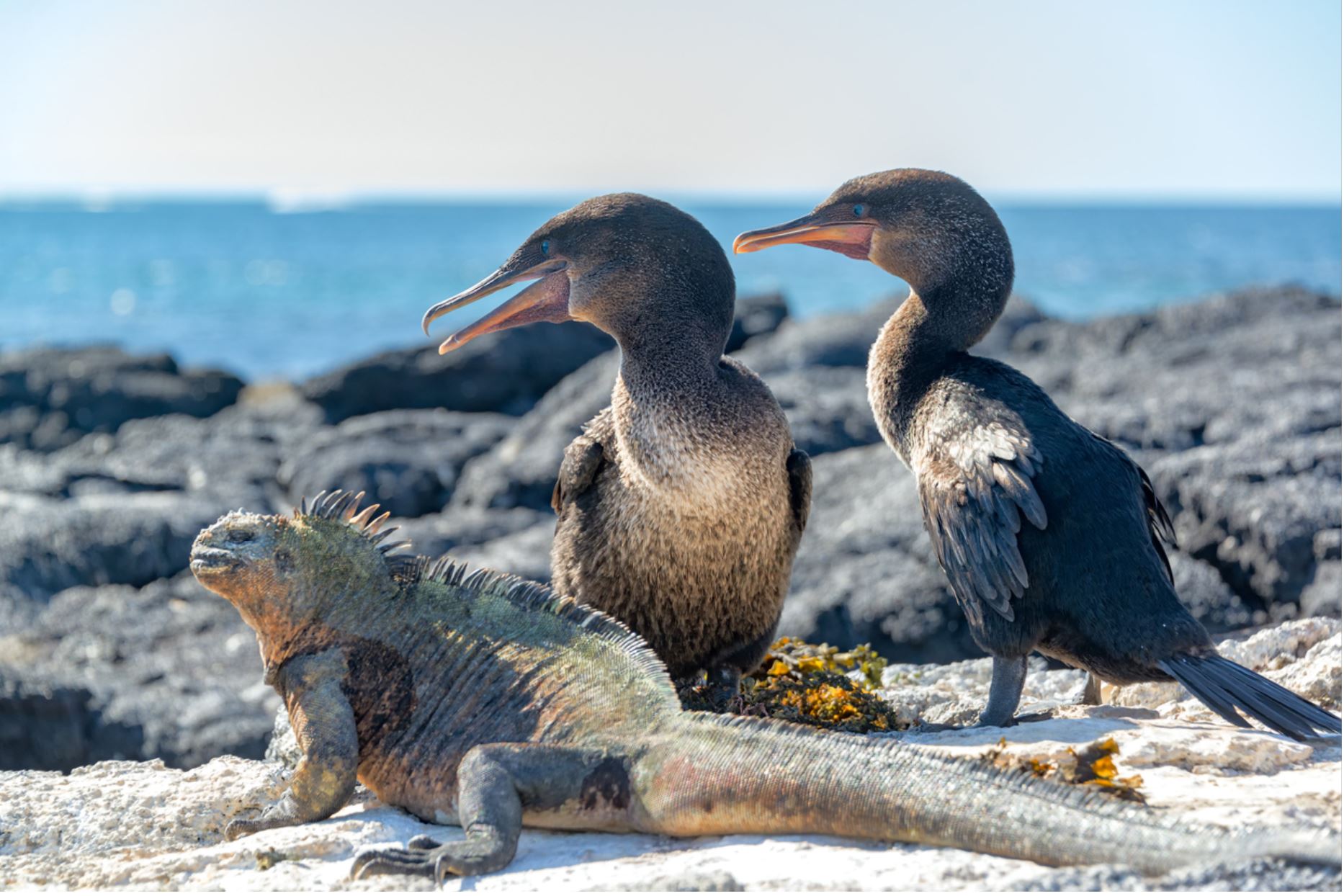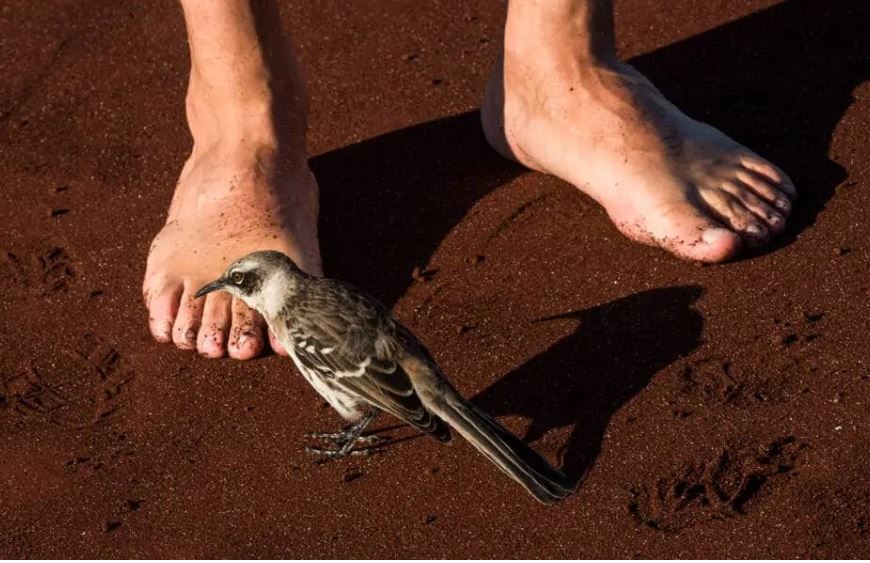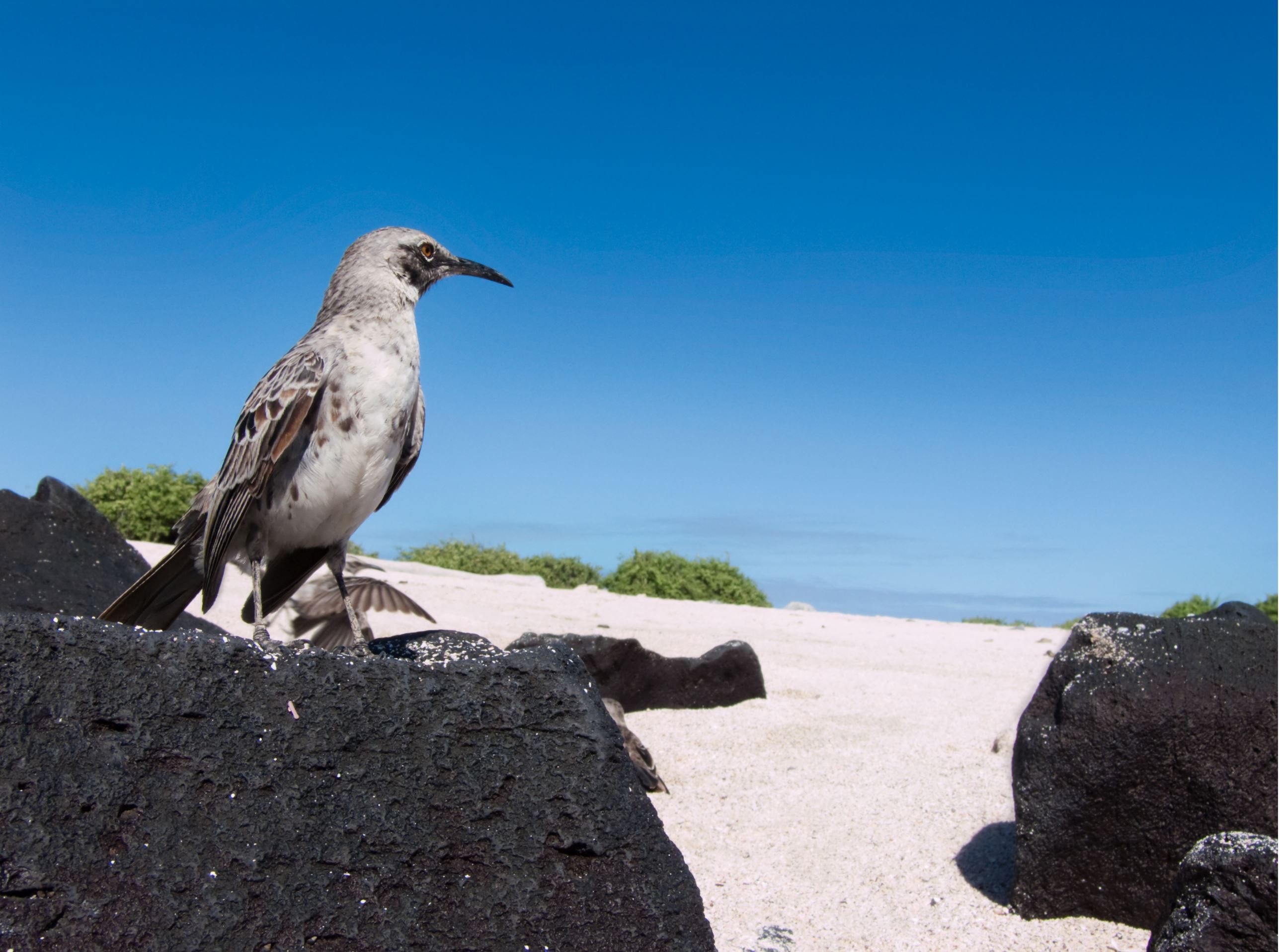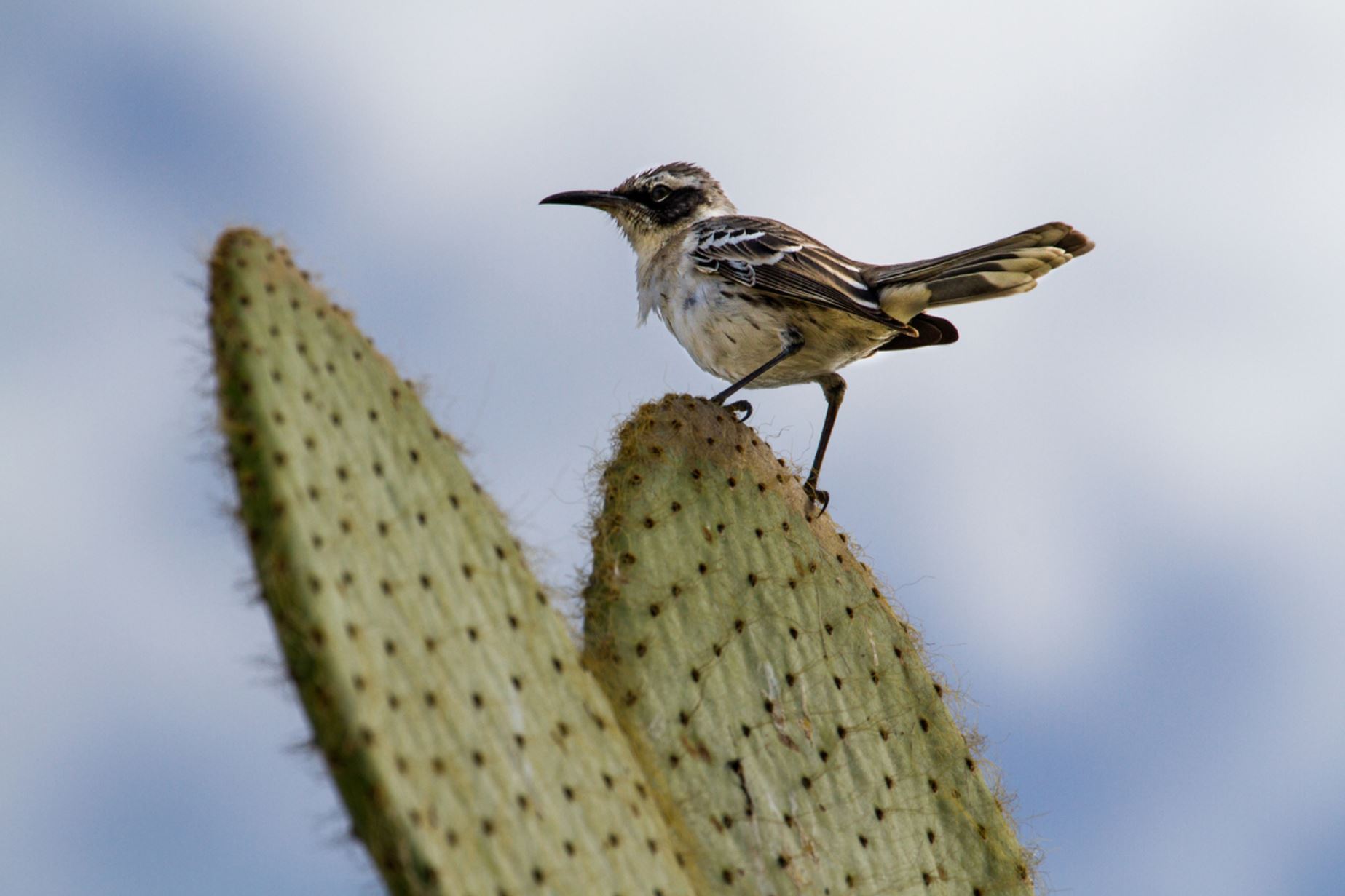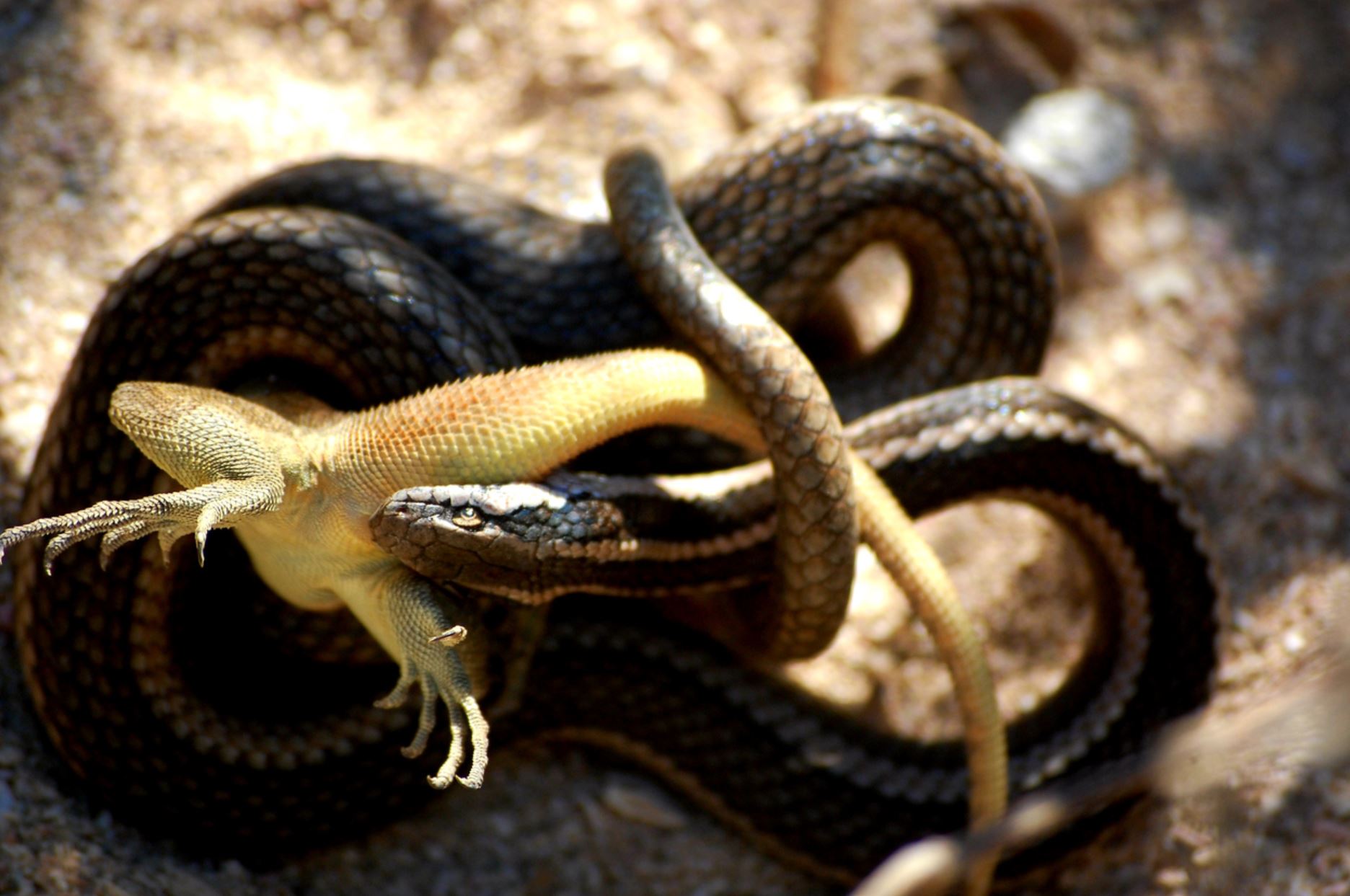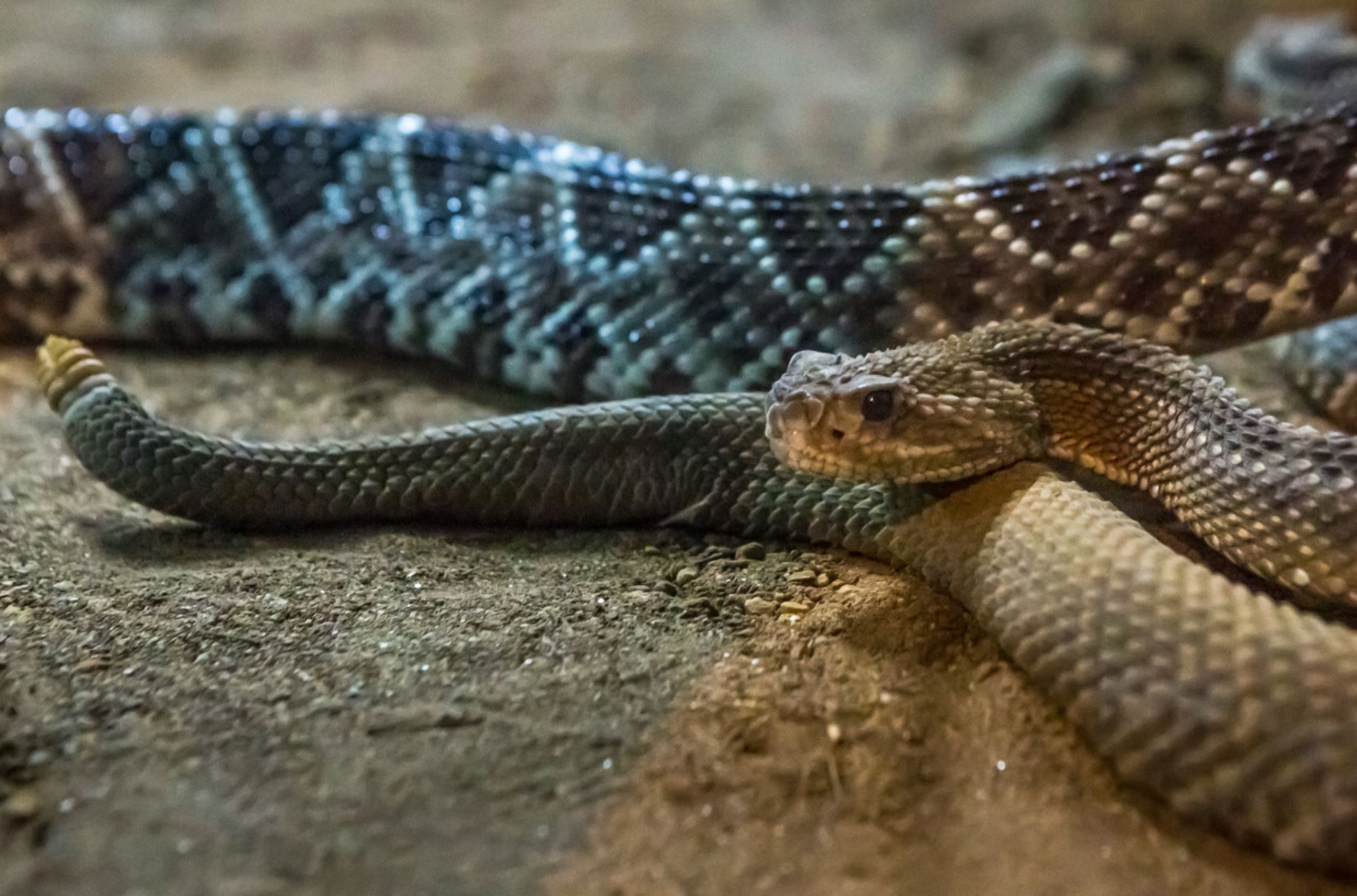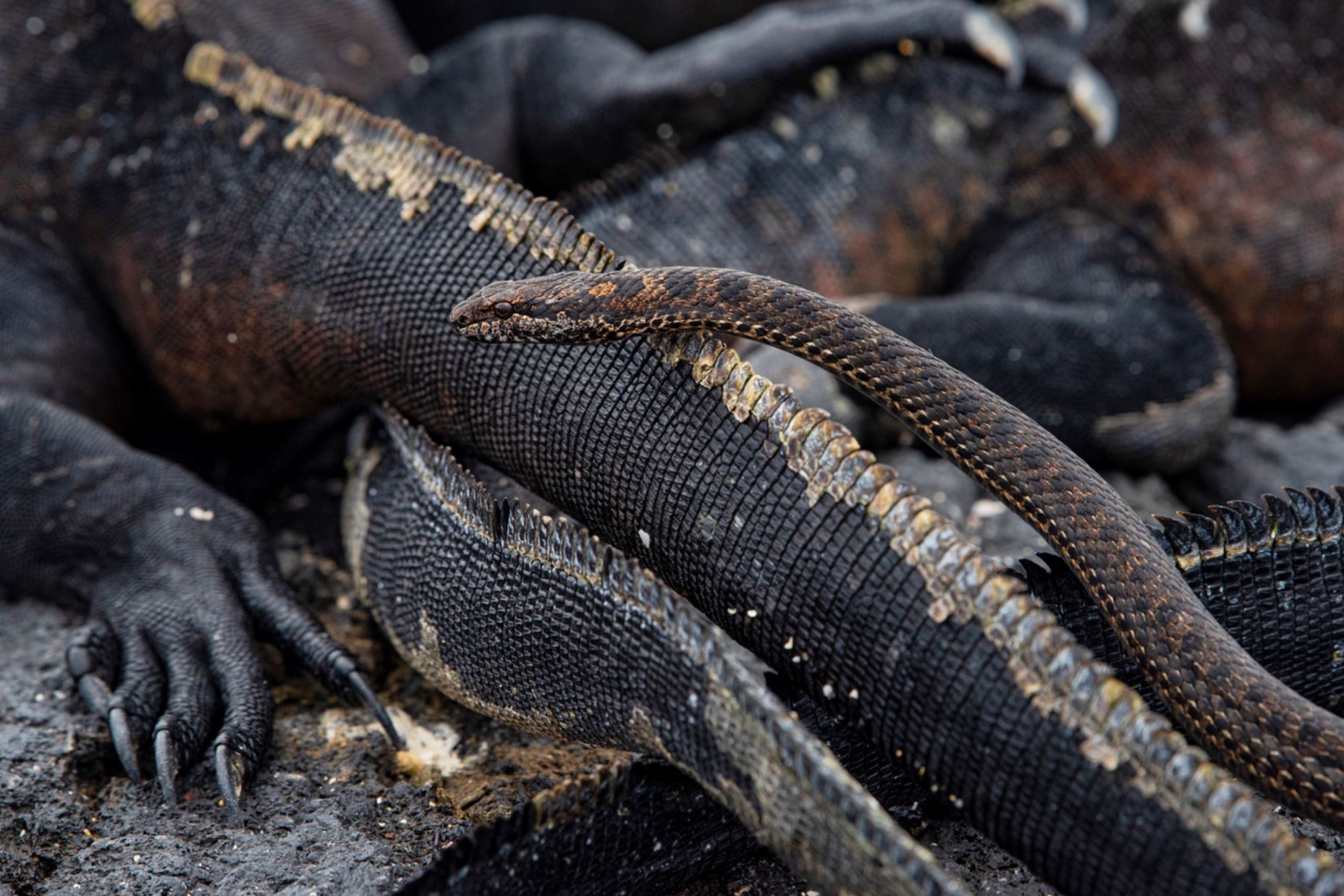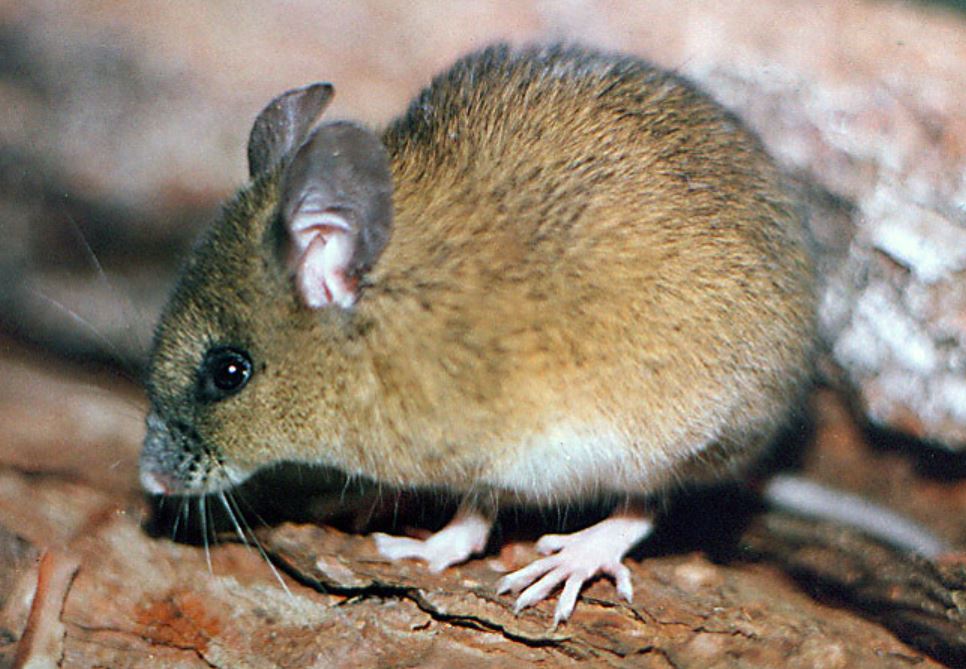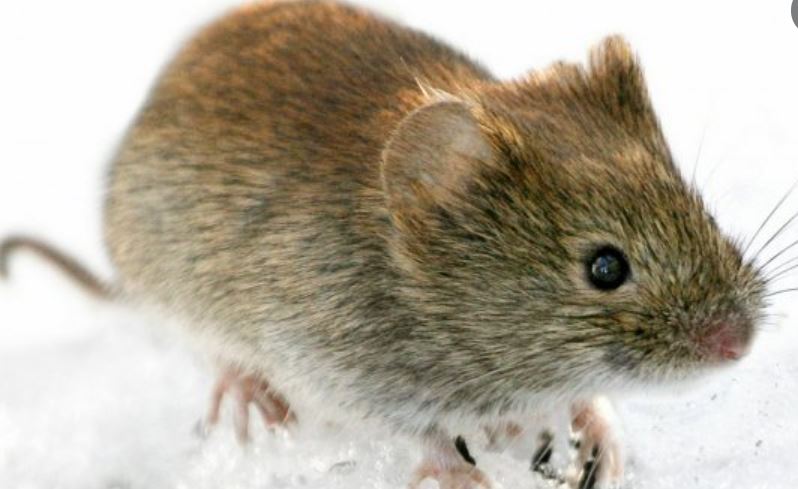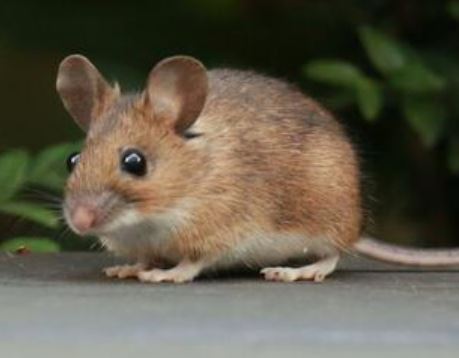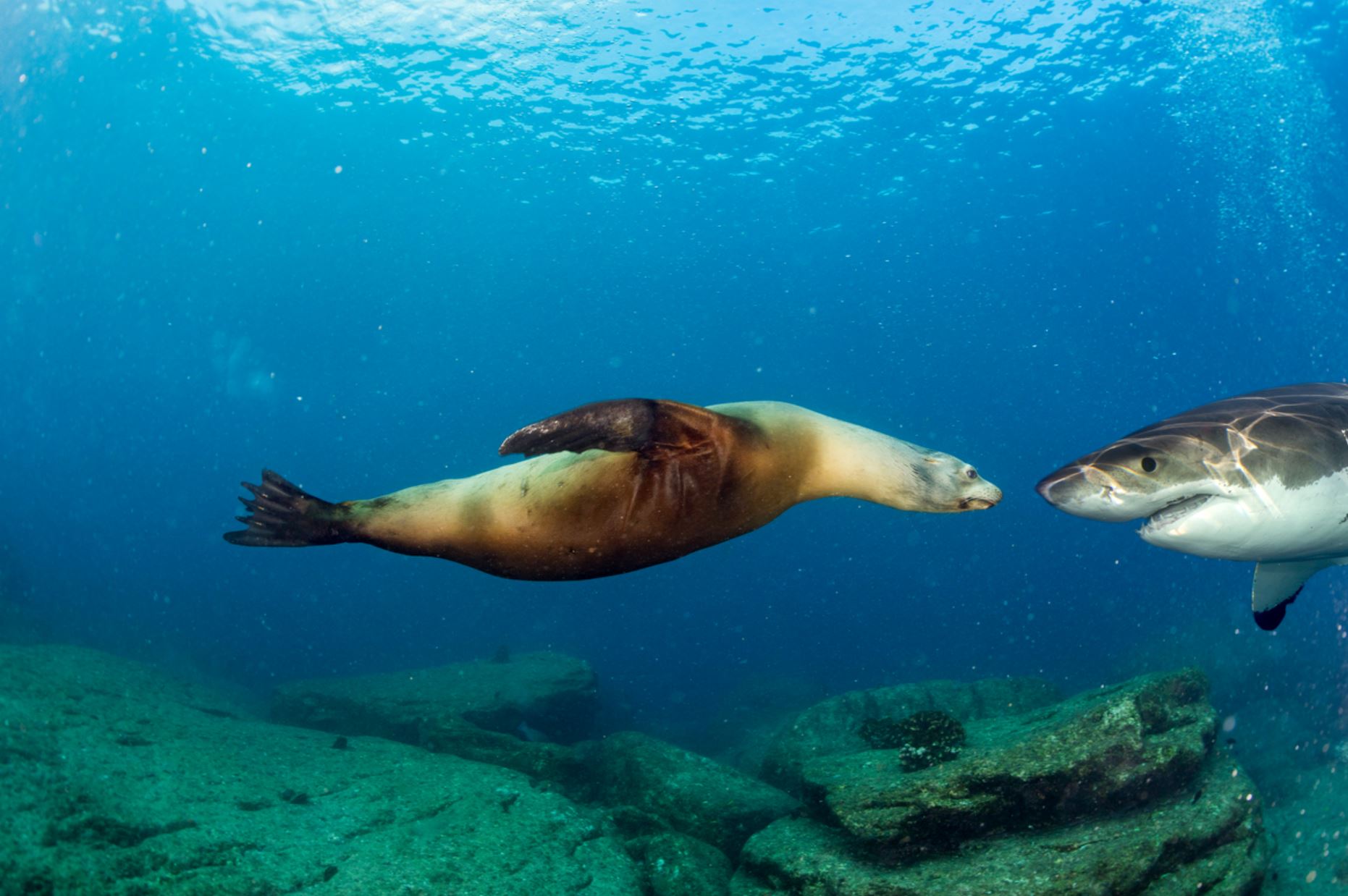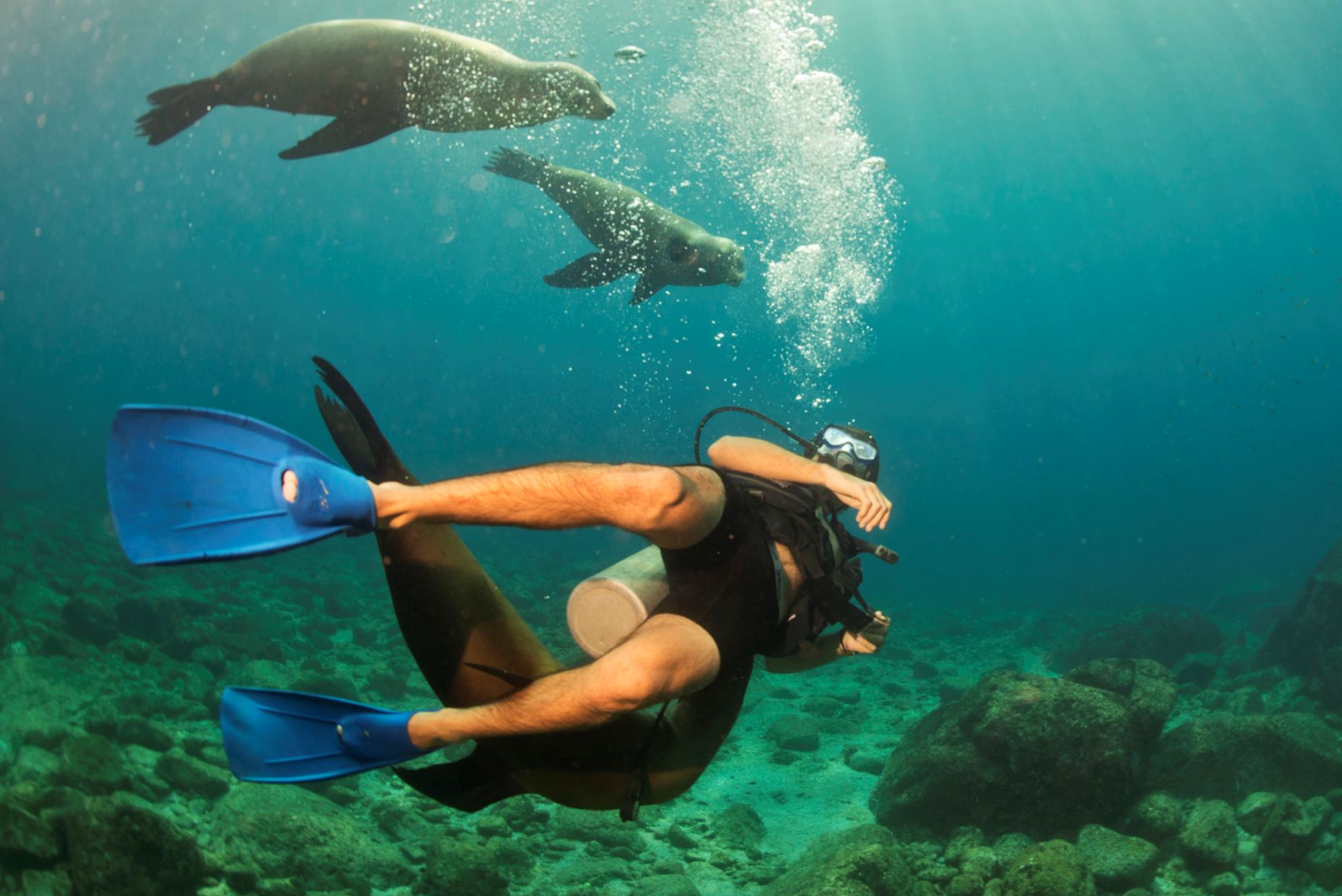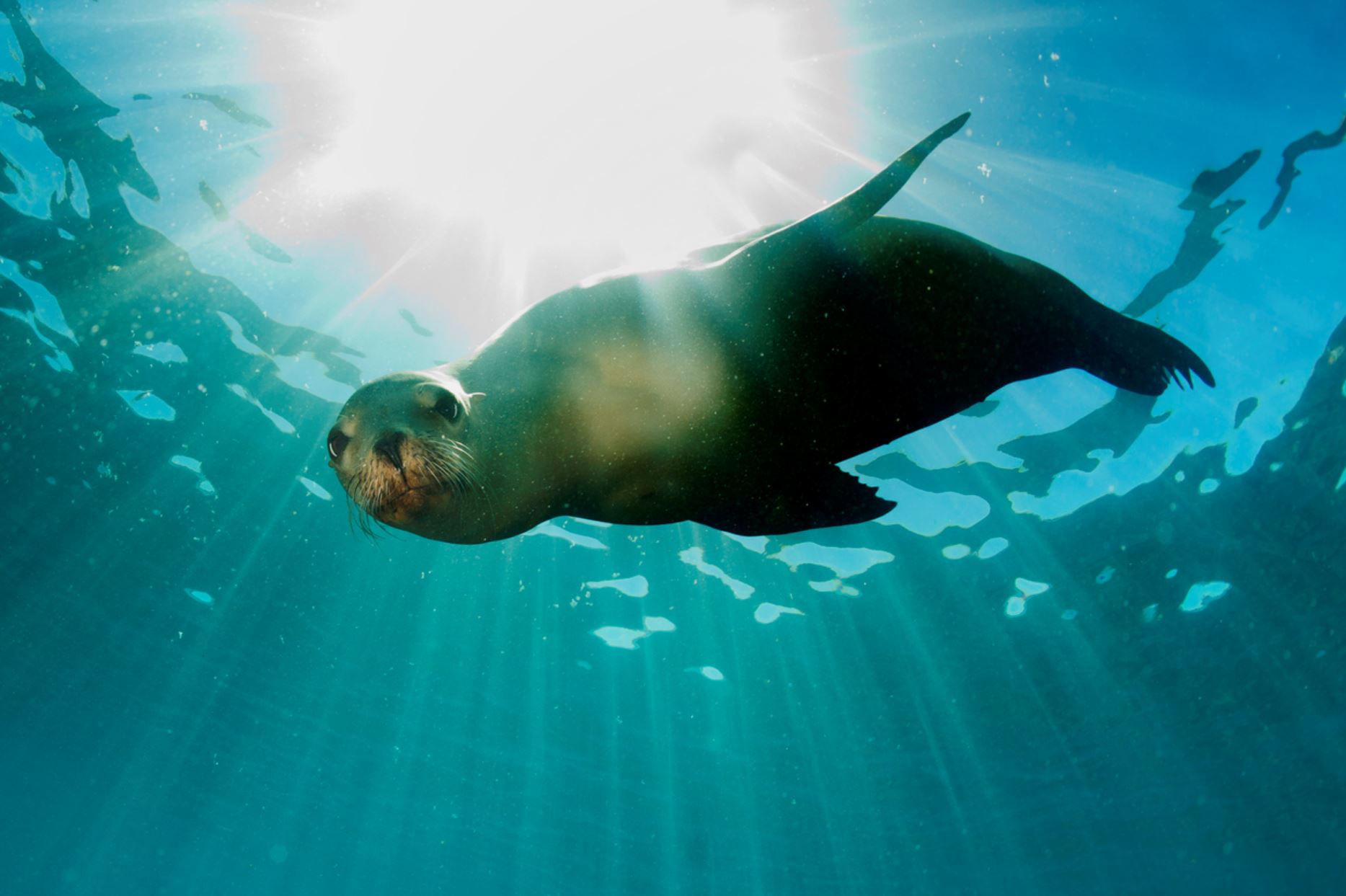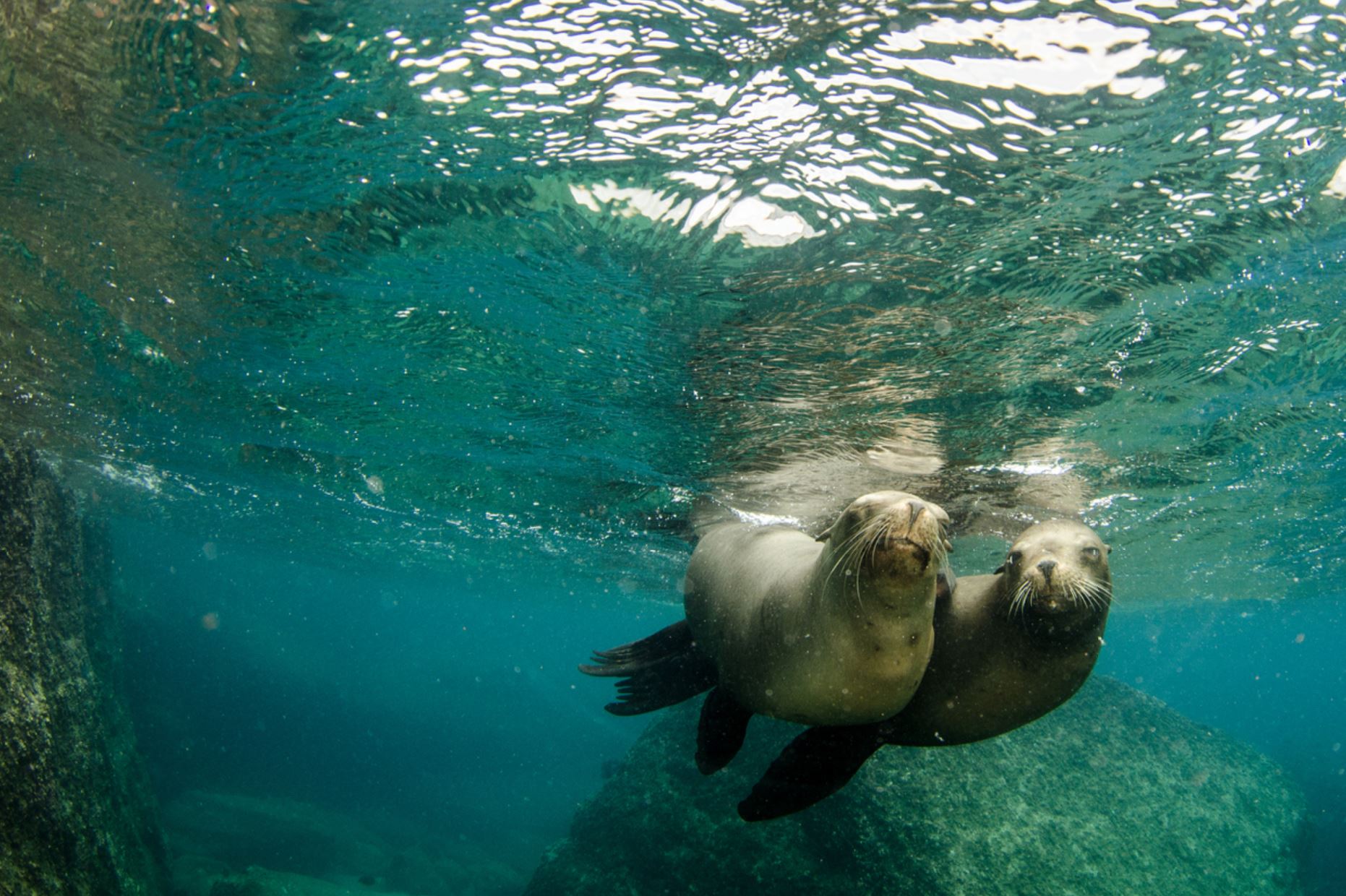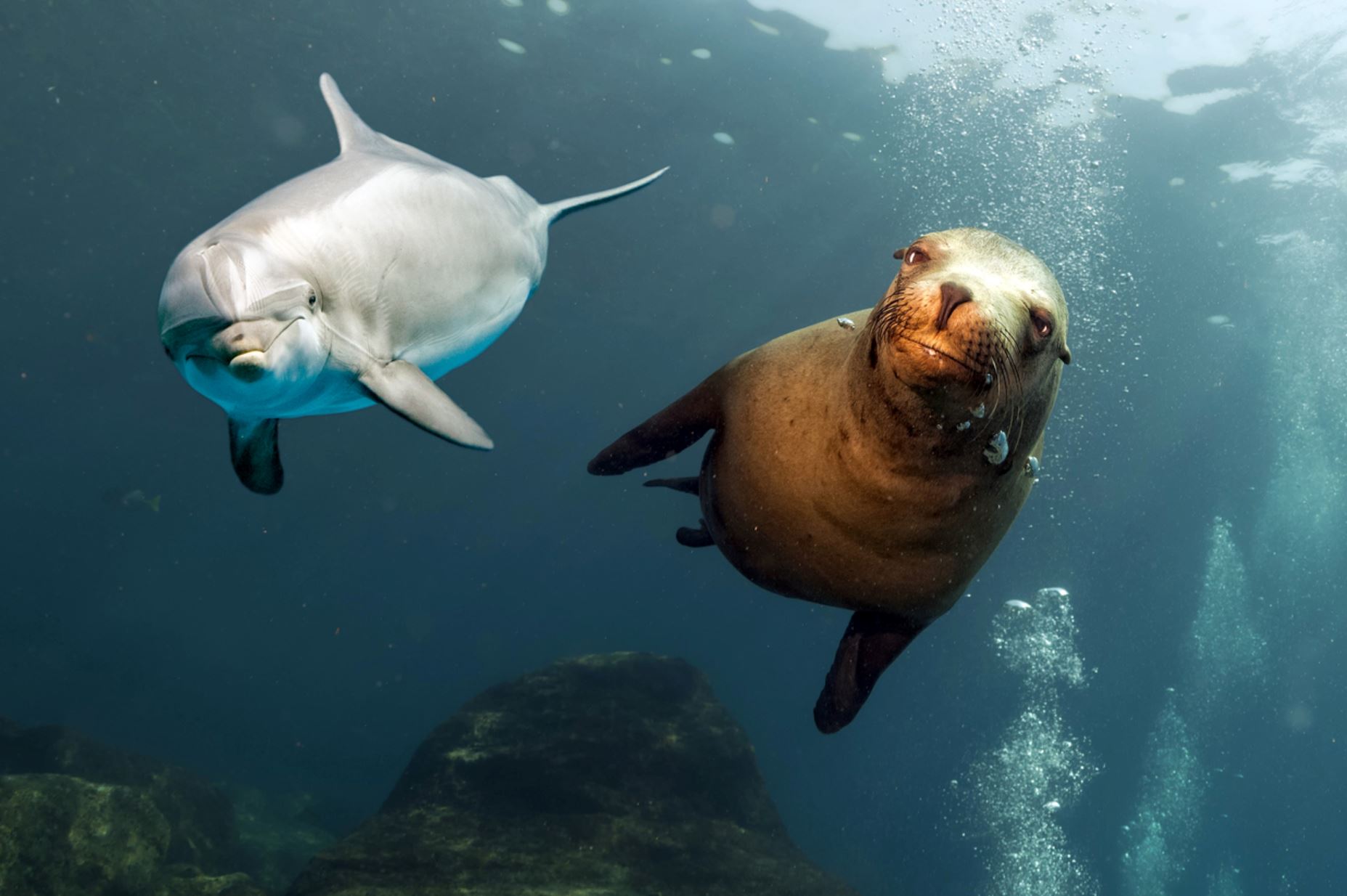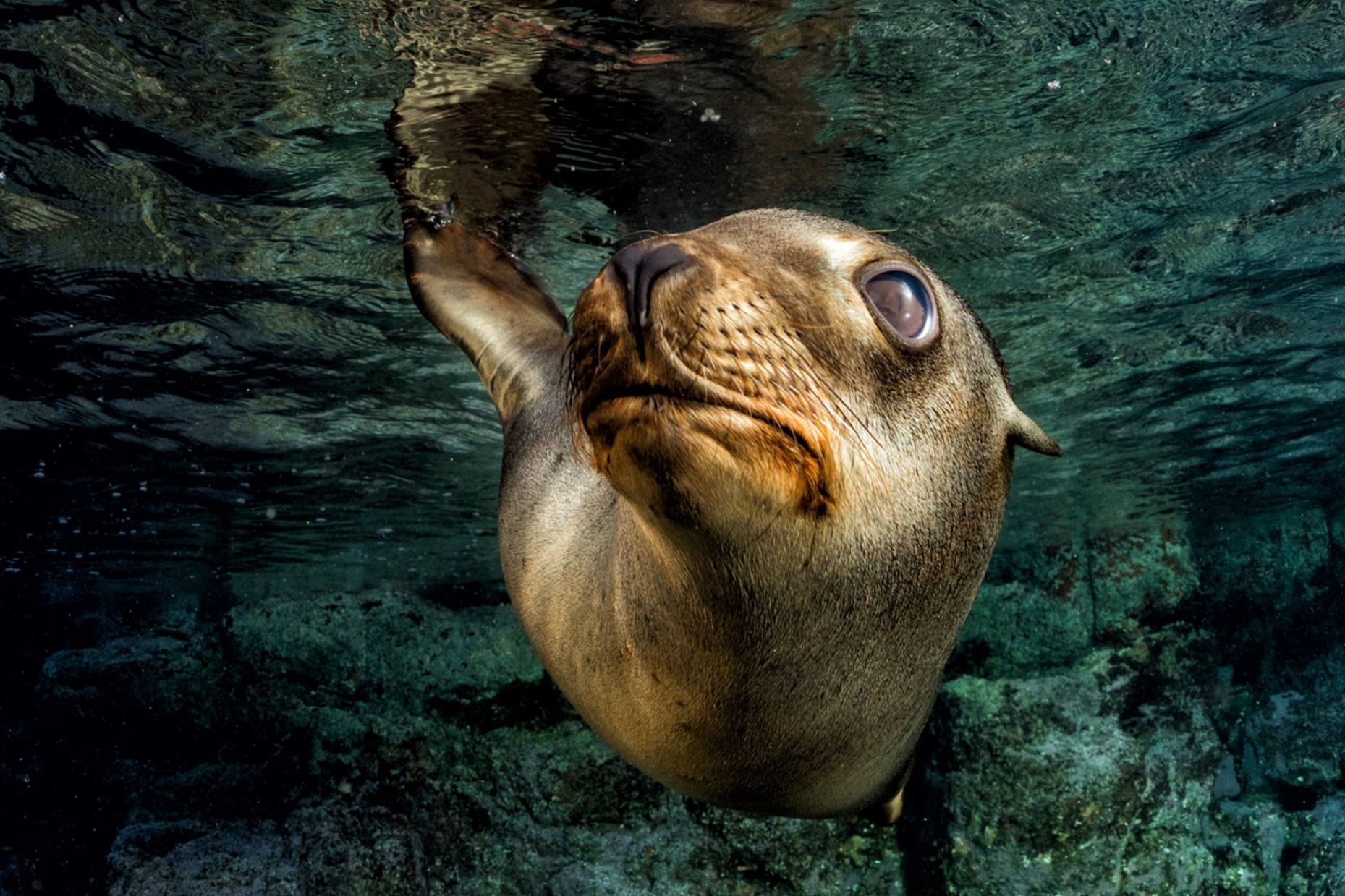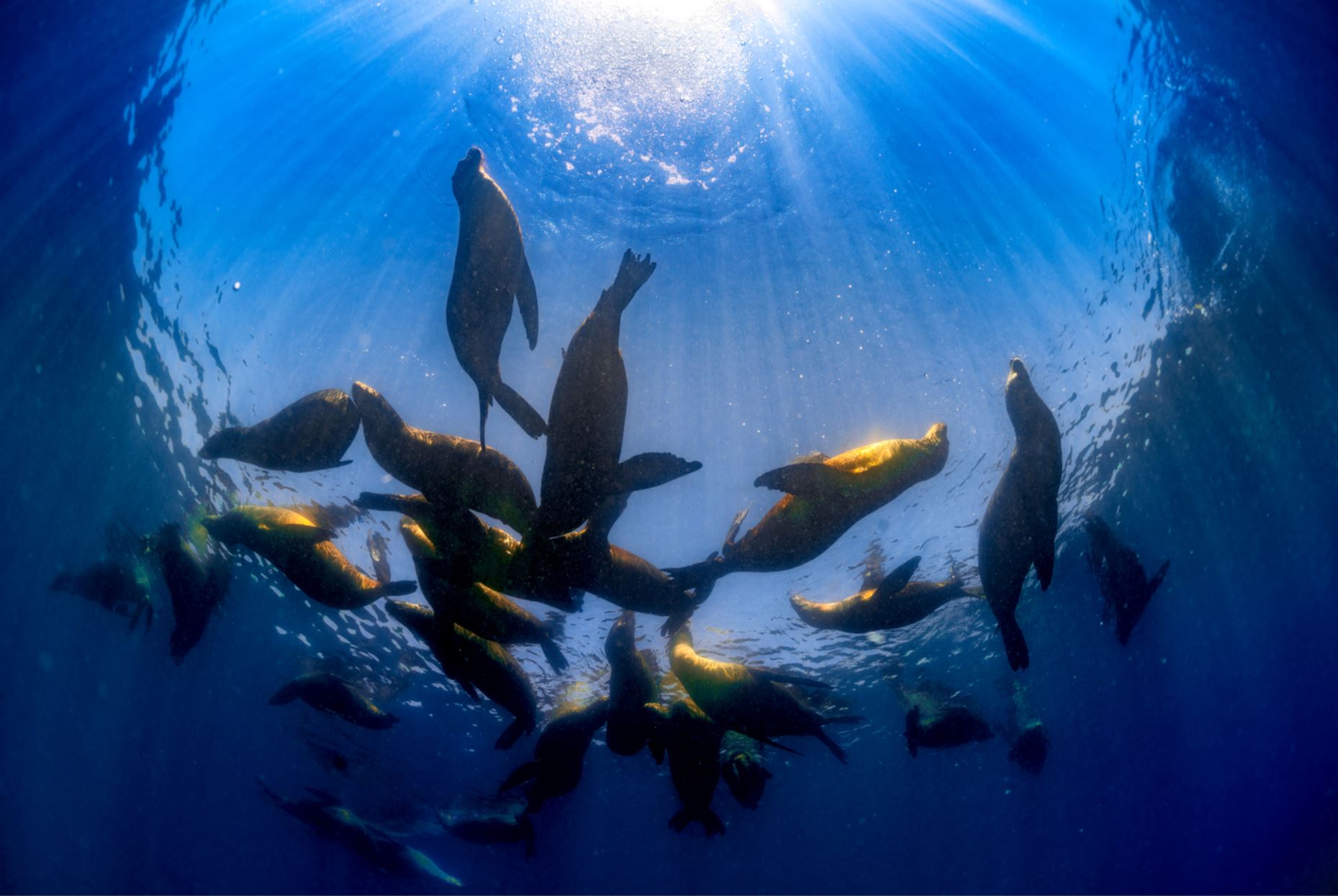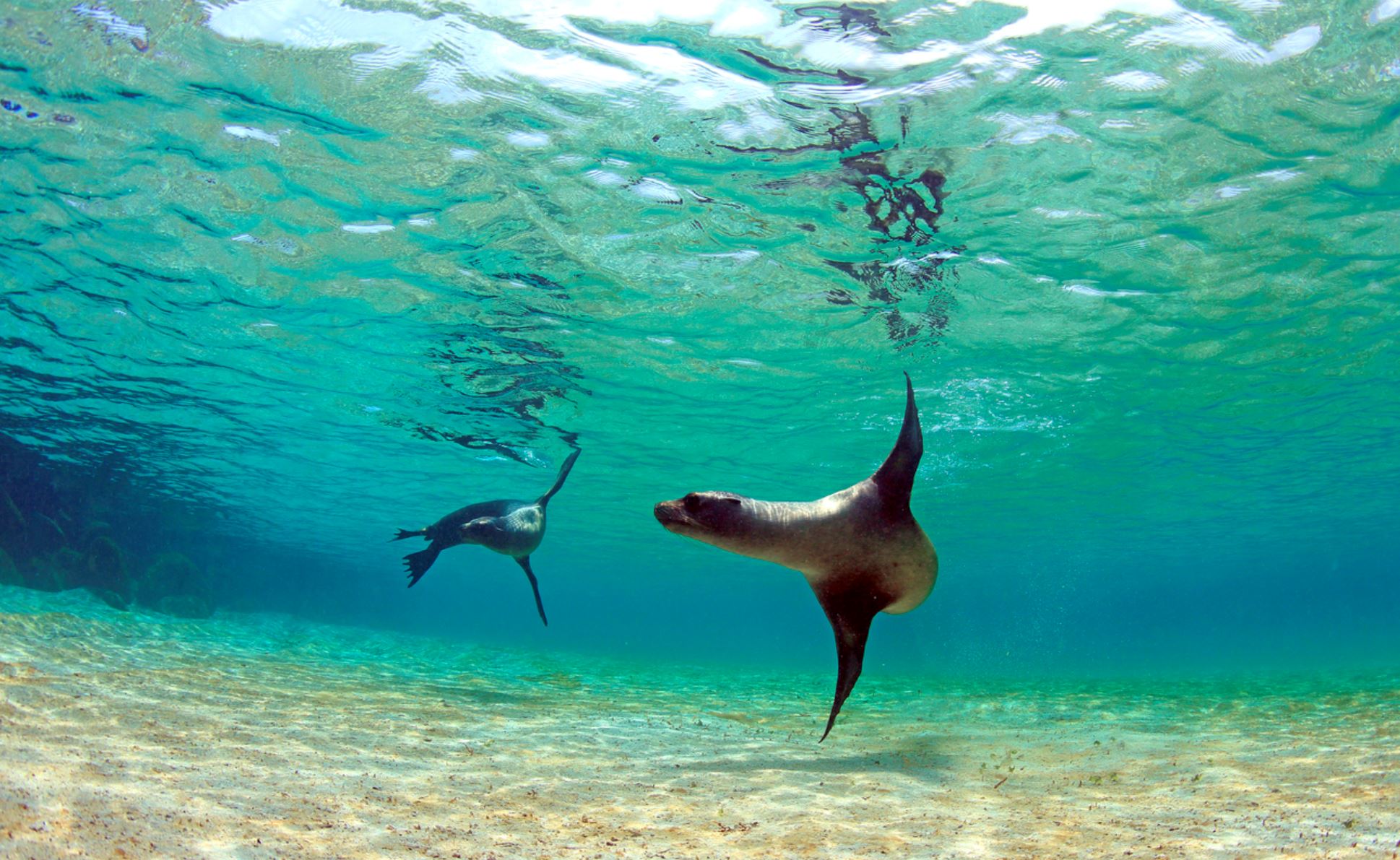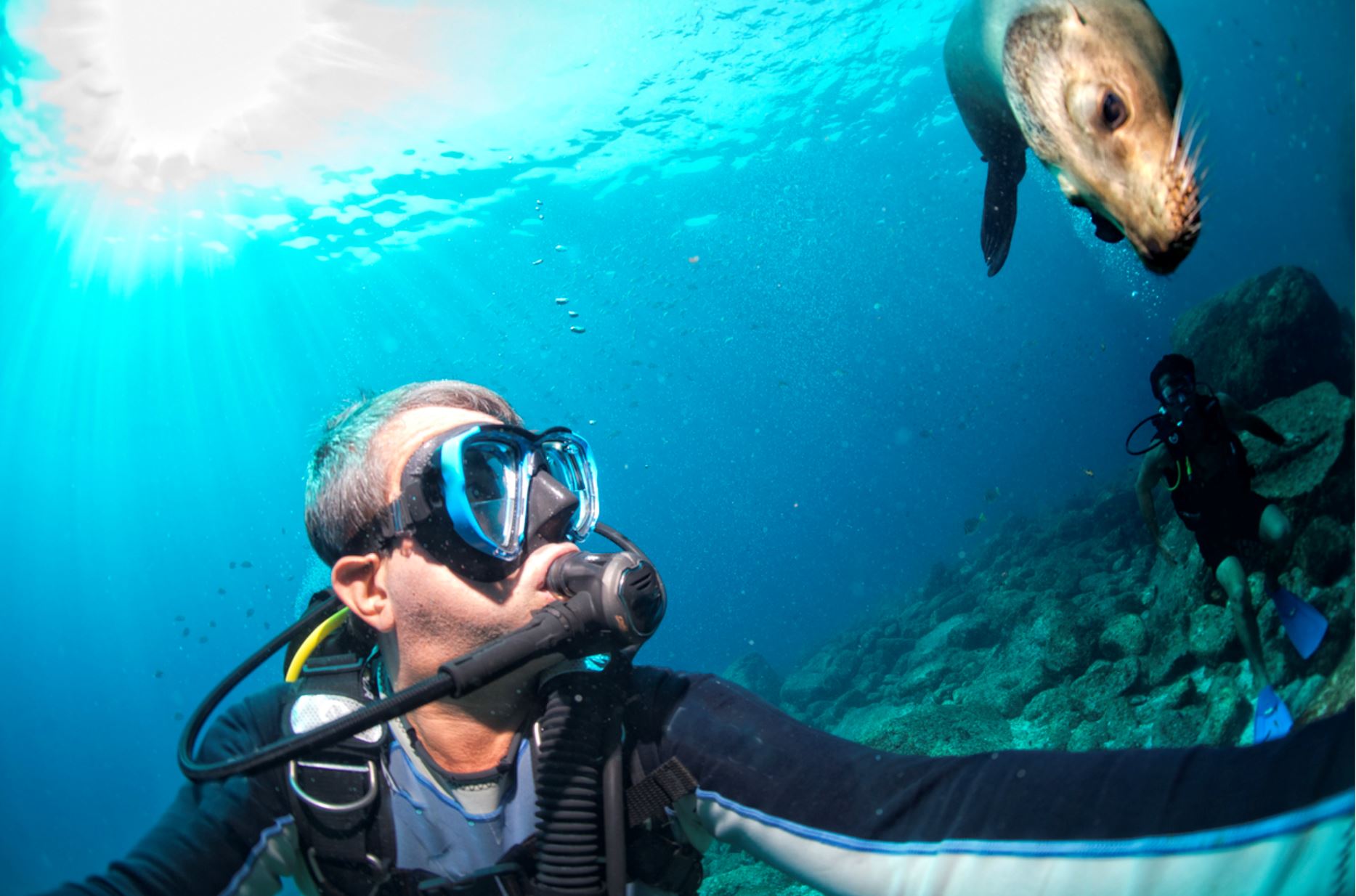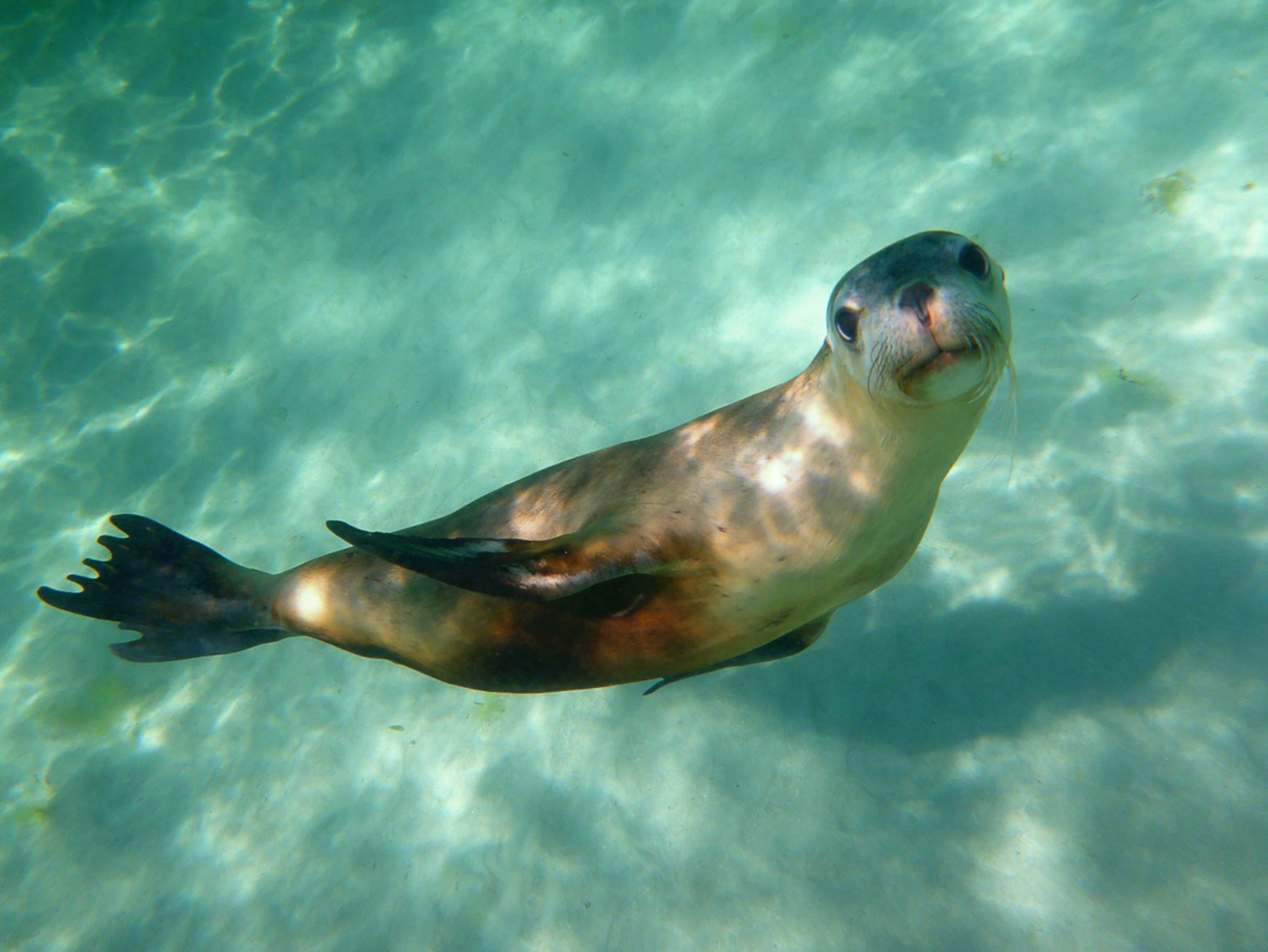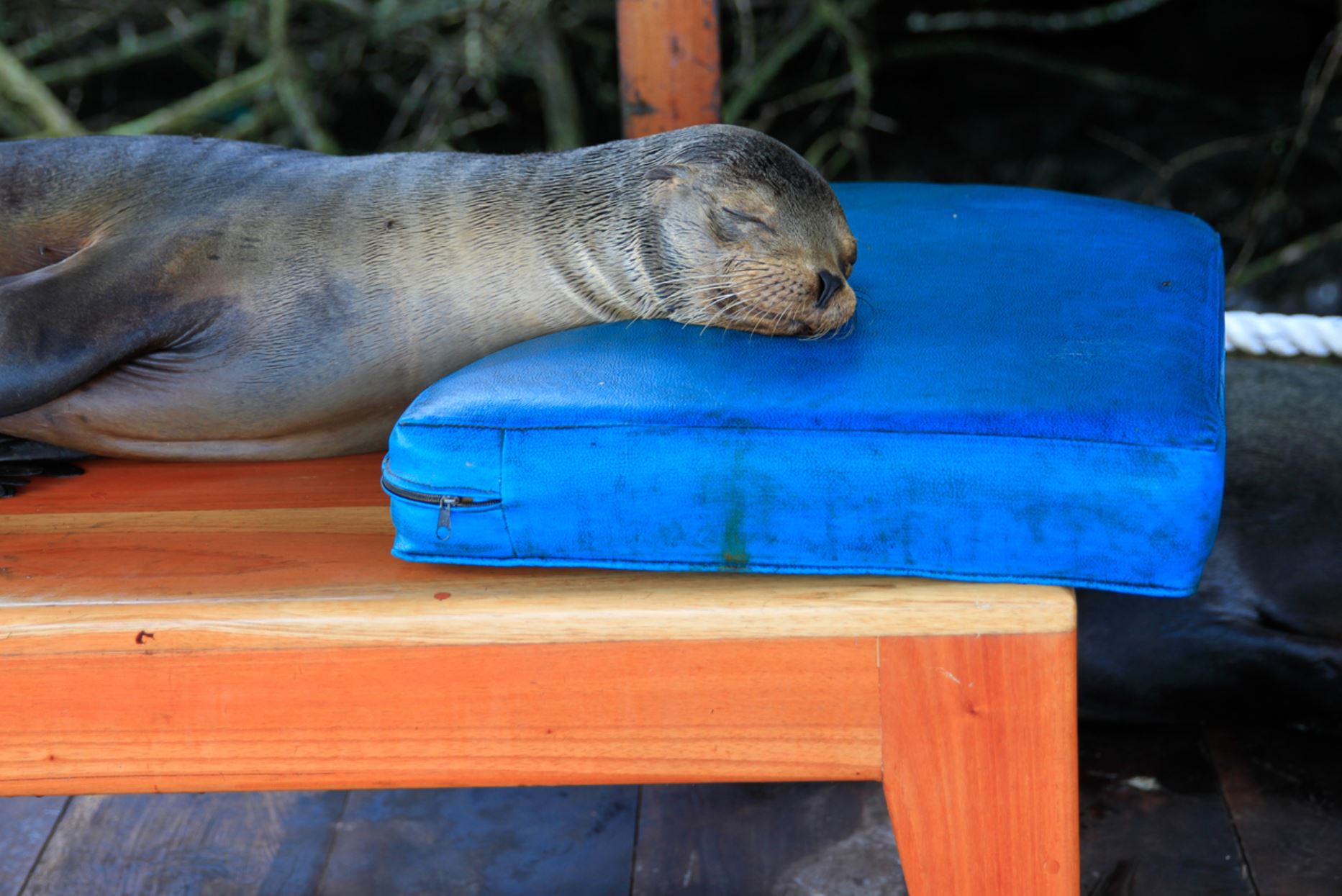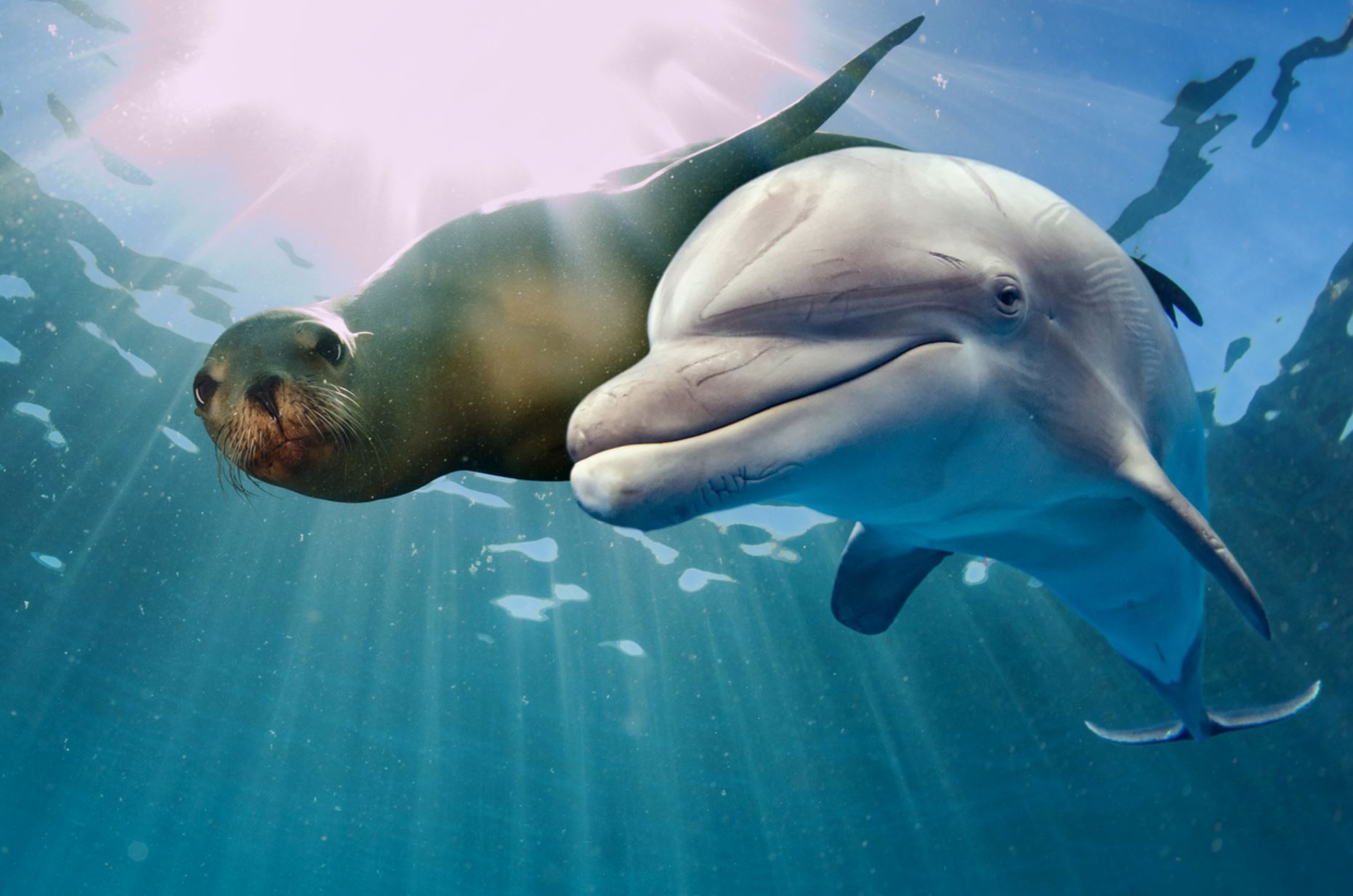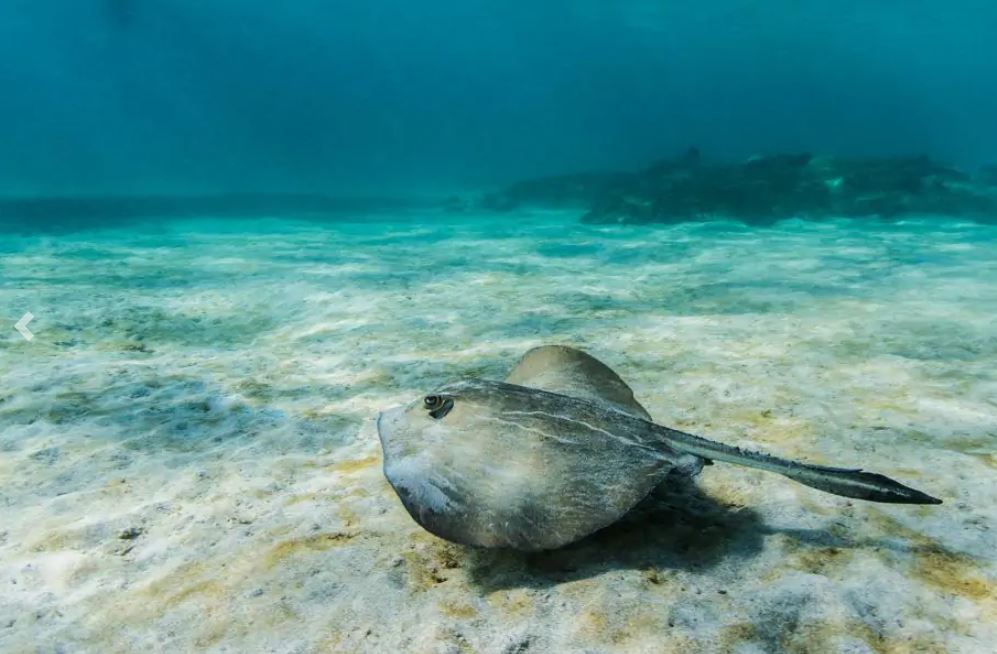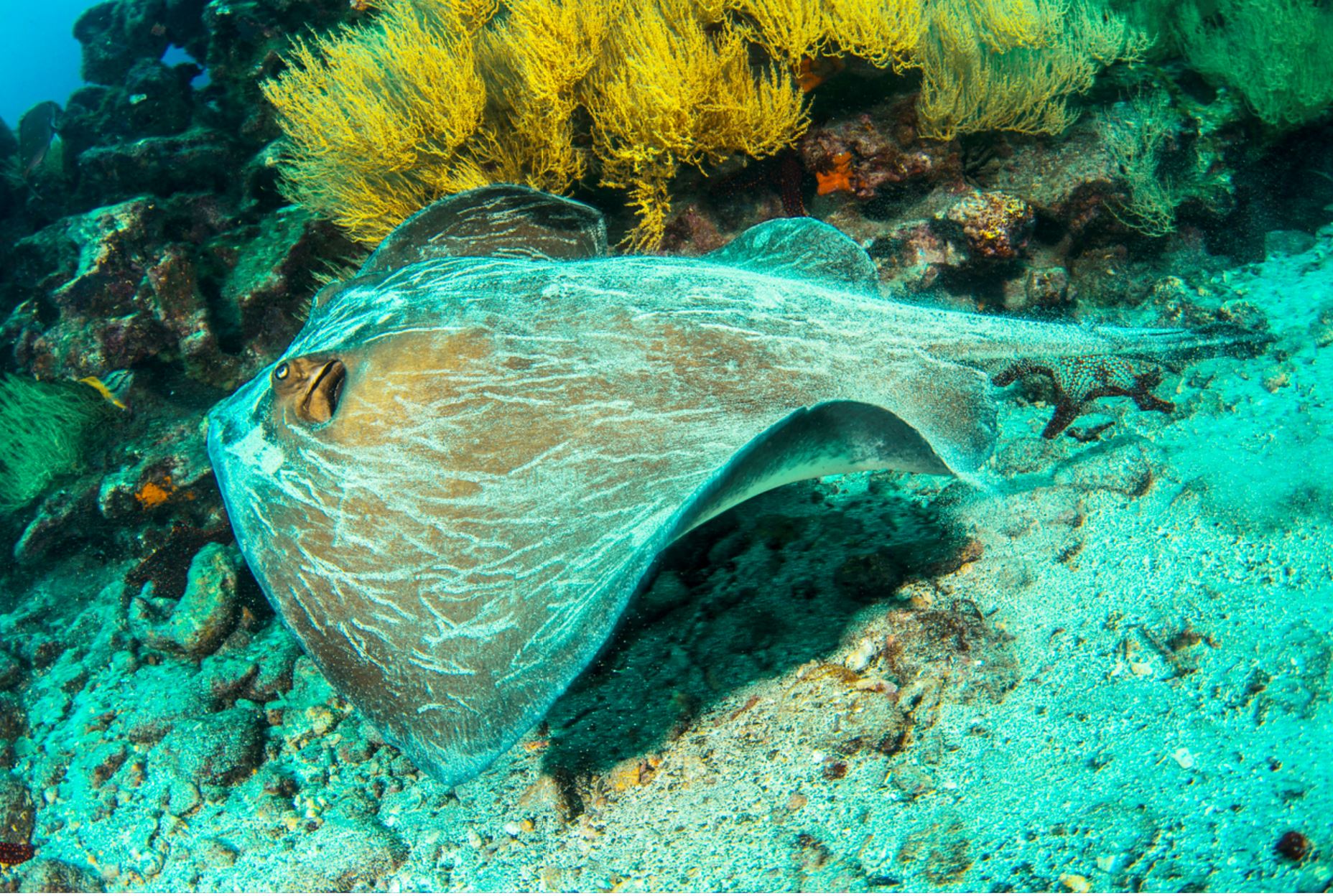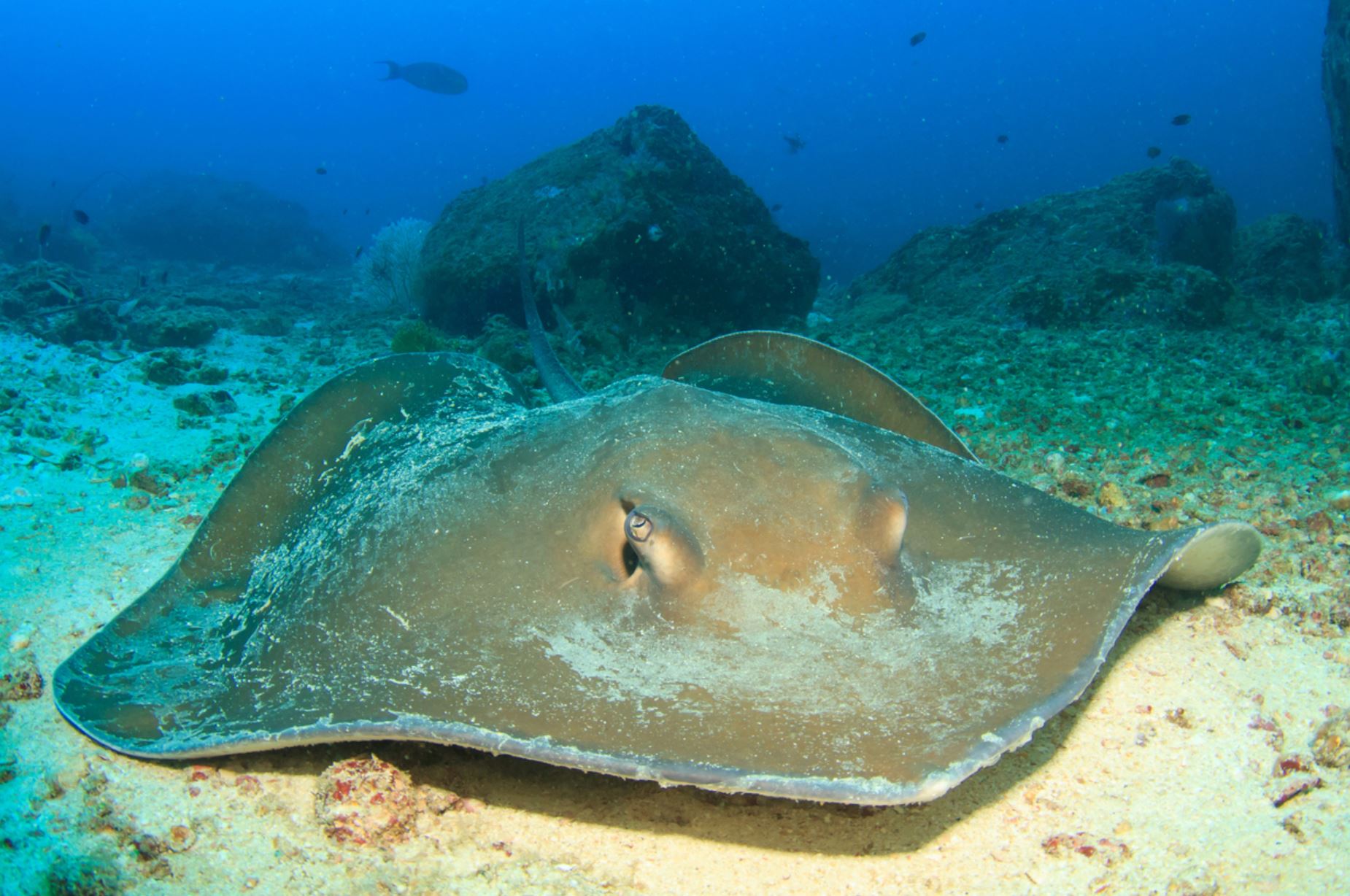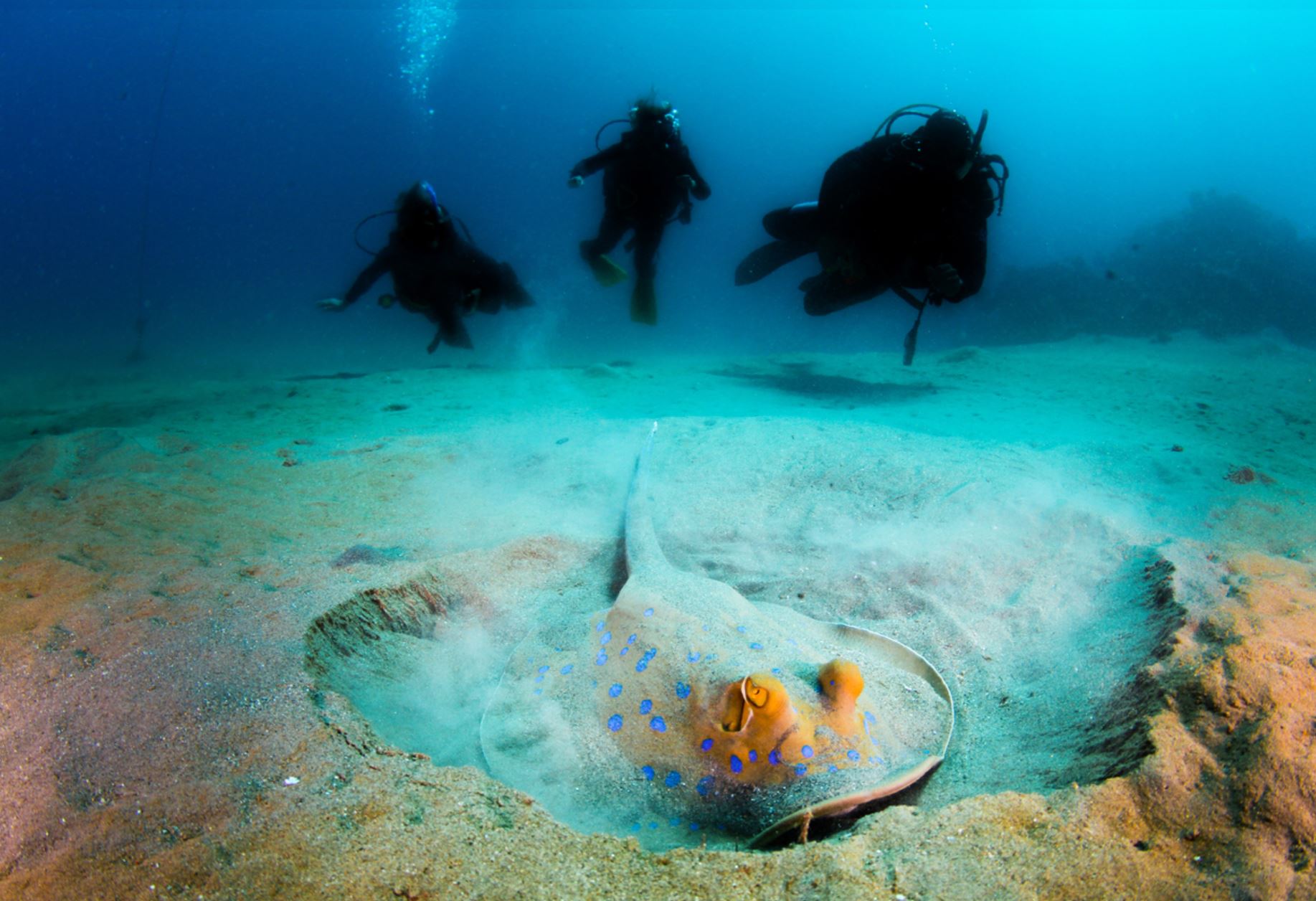Santa Fé
Animals/Wildlife




Landscape/Views




Snorkeling




Beaches




The oldest island of all (4.5 million years), is the result of the uplifting of a layer that previously suffered geological folding even tough recent data suggests it has also had volcanic origins. This island is a very rare formation located in the middle of Santa Cruz and San Cristobal islands, on the south east of the archipelago and it holds a beautiful turquoise lagoon on its bay, an often visited historic anchoring point. It was called Barrington because of the Brithish Admiral.
It is an unpopulated island.
The island with the highest endemism. Due to is geological nature and age; most of the animals on this island are endemic to this only location. Here the Marine Iguana of Santa Fe can be found as well as the Santa Fe Mockingbird, the Santa Fe rice Rat and the Santa Fe lizard.
Animals: frigate birds, blue footed boobies, sea lions, marine iguanas, swallow-tailed gulls, snakes, herons, hawks, sharks, rays.
Plants: giant cactus.
Offering one of the most beautiful and sheltered coves in the islands, home to a number of endemic species including Galapagos Hawk, Darwin’s finches and endemic land iguana.
Visitor sites:
The visitor site Santa Fe is located on the northeast end of the island bearing the same name. We continue walking through an endemic cactus forest as we search for the endemic Santa Fe land iguana, which is the largest in the islands and distinctively paler, and sea lions.
This island is home to a number of endemic species including Galapagos hawk, Galapagos snake, a variety of finches and one of the four species of Galapagos mockingbirds.
Activities: 1 hour 30 min walk / 1 hour deep-water snorkeling
Highlights: Santa Fe land iguana unique in Galapagos, largest cactus of the archipelago.
Pictures
Highlights / Places to Visit
walking thru the fantastic island Santa Fé
The visitor site Santa Fé is located on the northeast end of the island bearing the same name. We continue walking through an endemic cactus forest as we search for the endemic Santa Fe land iguana, which is the largest in the islands and distinctively paler, and sea lions.
This island is home to a number of endemic species including Galapagos hawk, Galapagos snake, a variety of finches and one of the four species of Galapagos mockingbirds.
Animals that can be seen on the island
Belted Kingfisher
Unmistakable; the only kingfisher recorded in Galapagos. Stocky built, with large, crested head and strong, dagger-like bill. Adults are blue-grey above, with a broad white collar. Underparts mainly white with, in male, a single blue-grey breast-band and in female an additional rufous band across the upper belly, extending to the flanks. Juveniles resemble adults, but have rufous tones to the breast-band.
Behavior:
Perches or hovers over water, plunging head first to catch fish.
Na Category: Land Birds
Number of Species: 49
Endemic Species: 22
In total, 49 species of land birds have been recorded in the Galapagos, 22 of which are endemic to the Islands. Land birds can be divided into 5 categories: Diurnal Raptors, Night Birds, Larger Land Birds, Aerial Feeders and Smaller Land Birds.
Category: Larger Land Birds
Endemic Subspecies: Galapagos Dove
Eight species of larger land birds have been recorded in Galapagos, five of which are resident including one endemic species. The larger land birds can be conveniently divided into three groups: Pigeons & Doves, Kingfishers and Cuckoos.
Kingfishers are small to medium-sized, stocky birds with short legs and necks, large heads and very large, dagger shaped bills, which are used to catch fish. The only species recorded in Galapagos, the Belted Kingfisher, is large with unmistakable plumage.
Animal group: Alcedinidae
Scientific name: Megaceryle alcyon
Animal Average Size: 28–35 cm (11–14 in) in length with a wingspan of 48–58 cm (19–23 in)
Animal Average Weight: 113 to 178 g (4.0 to 6.3 oz)
Where can you find with a little bit luck the Belted Kingfisher in Galapagos:
Santa Fé island
San Cristobal
Brown Pelican
Pelicans are large, heavy waterbirds with short legs, webbed feet, and exceptionally long bills. The bill has a large, distensible pouch, used as a scoop-net to catch fish. In flight, pelicans hold their head and neck drawn back and have slow, rather ponderous wing beats. Their large wingspan makes them accomplished gliders. Pelicans are very ungainly on land, rarely walking far; however, they are comfortable around humans, especially around fishing boats or ports where they can get an advantage of the food available from fishermen.
The brown pelican is a common resident of Galapagos, an endemic species that goes by the scientific name of Pelecanus occidentalis urinator. Its population is estimated at a few thousand pairs that breed throughout the year, nesting in small colonies in low bushes and mangroves, occasionally on the ground, and laying up to two eggs that are incubated by both sexes. Males and females are alike, with brown plumage in their bodies and yellow heads. Their beaks are whitish gray with patches of red.
- Animal Group: Seabirds
- Scientific Name: Pelecanus occidentalis
- Animal Average Size: 105 - 152 cm
- Animal Average Weight: 3.17 - 3.7 kg
Places where you may see this animal:
Santiago island
Santa Cruz island
Santa Fé island
Floreana
Galapagos Green Turtle
Turtles are one of the most widespread species of marine turtle, found in tropical and subtropical waters throughout the globe. However, the Green Sea Turtle (Chelonia Mydas) is the only species of turtle that nests in the Galapagos Islands.Research has revealed that the nesting colony in the Galapagos is the largest in the East Pacific.
The Green Sea Turtle was so named because of the green colour of its body fat. The adult turtles algae diet is responsible for the colour in its tissues.
Green Sea Turtles body is wonderfully adapted to life in the ocean. Their shells are lighter and more streamlined than those of their terrestrial counterparts and their front and rear limbs have evolved into flippers making them efficient and graceful swimmers, capable of swimming long distances in a relatively short period of time. Green Sea Turtles have been known to move through the water as fast as 35 miles per hour. The Turtles sometimes emerge on to land to bask in the sun.
Green Sea Turtles are cold-bloodied. Adult green turtles are known to grow up to one and a half metres long. While individuals have been caught that reached weights of up to 315 kilograms (694 pounds), the average weight of mature individuals is around 200 kilograms (440 pounds). The largest Green Sea Turtle ever recorded weighed 395 kilograms (871 pounds).
The Green Sea Turtles shell is actually its skeleton. Unlike its cousin, the Tortoise, the Green Sea Turtle cannot retract its small head into its shell for protection from dangerous sea creatures.
Sea turtles have come up with an ingenious way to rid their bodies of the salts they accumulate from the seawater in which they live. Just behind each eye is a salt gland. Their salt glands help sea turtles to maintain a healthy water balance by shedding large ‘tears’ of excess salt. If a sea turtle appears to be ‘crying’ it is usually not cause for alarm, as the turtles are merely keeping their physiology in check. It is not because they are upset or sad.
Green Sea Turtles spend most of their life in the ocean. The males never leave the ocean, but the females come ashore to nest and lay eggs on several of the islands.
At night, the females dig pits on the sandy beach with their back flippers. They lay about 100 eggs and then they cover their pit. Green Sea Turtles leave the island and go back into the sea never returning to see their eggs. After the baby green sea turtles are about 6 months old, they start to eat algae and seaweed.
- Animal Group: Reptiles
- Scientific Name: Chelonia mydas
- Animal Average Size: 150 cm
- Animal Average Weight: 68 – 250 kg
Places where you may see this animal:
Santiago
Bartolomé
Santa Cruz
Santa Fé
Floreana
Galapagos Lava Lizard
Lava Lizards, scientifically known as Microlophus albemarlensis, are found on the Galapagos Islands. They are cold-blooded omnivores found in large groups moving around in the sun on top of the black lava that covers most of the islands. This movement in the sun keeps them warm, and gives them their name: Lava Lizards.
Galapagos Lava Lizards are small reptiles of 6-12 in (15-30 cm) long with tapering tails, slim bodies, pointed heads, long toes, and scaly skin. Their physical appearance, including their markings and color, varies based on where they live. Lava Lizards are of seven distinctive subspecies, out of which six species are found among six different islands with just one species inhabiting one island alone. They are commonly sighted all year-round and are usually active during the day. When mature, males have an intense coloring of a yellow, brown, grey-black speckling throat and a short crest of spiny scales along the back, whereas females have red or orange cheeks. Lava Lizards are unafraid of humans, so if you are ever lucky enough to see one in real life, you might be able to get your very own photo of these amazing reptiles!
- Animal Group: Reptilia
- Scientific Name: Microlophus albemarlensis
- Animal Average Size: 15 – 30 cm
- Animal Average Weight: 250 g
Isabela
Santiago
Santa Cruz
San Cristobal
North Seymour
Santa Fé
Floreana
Española
Galapagos Marine Iguana
The marine iguana is the only marine species of lizard in the world; it has changed its behavior, diet and physiology through natural selection during thousands of years.
There are seven subspecies, most of them developed in different islands. They have black bodies that sometimes especially during mating season and in different times on distinct islands, can have some colorful patches with green, orange, grey and yellow tones.
Marine Iguanas are ectothermic animals, same as all reptiles. As a result, they need to thermo regulate their activities in order to survive, by behavior. They need to warm up with the sun to the ideal temperature of 35.5C to successfully perform an activity such as feeding, or to even move from one place to another. Their actions are dependent on the water temperature and climate, for example entering the ocean to feed they can lose up to 10C (mainly in the night).
Marine Iguanas must constantly warm up in daylight by lying flat, in order maximize how much heat they are receiving, also marine iguanas need to cool off when the sun is too strong by avoiding direct rays on their body. These animals are capable to even slow down their metabolism and heartbeat, in order to optimize their energy consumption. Typically, marine iguanas feed once a day, but depending on their size and needs they can do it every two or three days.
Sexual maturity is reached after 8 years and they can lay between one to four eggs, breeding season is usually in the months of November and December.
Marine Iguanas can be seen on the majority of the Galapagos shoreline as they feed on algae that grow in all intertidal zones of the archipelago. They are able to feed on almost all kinds of seaweed with the exception of the brown one ( it makes them sick). They prefer shallow water or exposed sea weed in order to feed without the necessity of diving, thus saving body temperature. However, it needs to be clear that marine iguana can dive as deep as twelve meters and hold their breath for about one hour if needed.
Their flattened tails help them to swim efficiently. These iguanas have developed a special gland to secrete the salt they ingest by feeding, such gland is located by the ear and is connected to the nose rich from where they expel a salty solution. Such salty solution is expelled by sneezing.
- Animal Group: Reptiles
- Scientific Name: amblyrhynchus cristatus
- Animal Average Size: 70cm
- Animal Average Weight: 13kg
Fernandina
Isabela
Santiago
Bartolomé
Santa Cruz
Santa Fé
Floreana
Española
Galapagos Mockingbird
Mockingbirds in most regions of the world are known for having the ability to imitate the singing from other birds and several other kinds of noises. It is believed that this skill was developed in order to have a more successful feeding in other bird territories, and as a reproductive feature for males.
In the Galapagos there are four different subspecies. All of them are related to a single colonization event, but in four different islands. They are very similar to the other locations species physically. They protect the group and even feed newborns of other individuals of the group. They are omnivores and their curiosity has made them some of the most commonly seen bird of the islands.
- Animal Group: Landbirds
- Scientific Name: Mimus parvulus
- Animal Average Size: 25 - 26 cm
- Animal Average Weight: 51 -56 g
Fernandina, Isabela, Genovesa, Santiago, Santa Cruz, South Plaza, Santa Fé
Galapagos Racer Snake
Racer snakes on Galapagos are constrictors and only mildly venomous. They are known to prey on lava lizards, geckos, insects, iguanas, mice, rats and hatchlings of several bird species. They are not at all aggressive towards humans and could not do much harm if they were to attack after being threatened. Racers tend to be dark brown with stripes or spots.
There is some confusion over the number of species of racer snake found in Galapagos due to poor research. The latest research suggests that there are: the Galapagos racer (Pseudalsophis biserialis) from San Cristobal and Floreana – though it is locally extinct on Floreana and now only found on nearby islets; the Espanola racer (Pseudalsophis hoodensis) from Espanola and adjacent islets; Santa Cruz racer (Pseudalsophis dorsalis) from Santa Cruz, Baltra, Santa Fe and adjacent islets; Fernandina racer (Pseudalsophis occidentalis) from Fernandina, Isabela, and Tortuga; banded racer (Pseudalsophis slevini) from Pinzon; and the striped racer (, ) from Baltra and Santa Cruz.
It is the Fernandina racer which has been observed hunting for marine fish from rock pools and the shallows around Fernandina. The British biologist Dr. Godfrey Merlen was the first scientist to ever see this behaviour happening as he noted up to 15 individual snakes slithering around the lava rock pools around Cape Douglas. This is a unique behaviour of terrestrial snake not observed anywhere else in the world. The racers on Fernandina were also the stars of BBC´s Planet Earth II where they were filmed hunting juvenile marine iguanas.
Racer snakes can be found in Galapagos on most of the major islands, though they are now locally extinct on Floreana. The snakes are found throughout the year, but unlike many other Galapagos animals they are shy of humans and will hide away making them reasonably tough to spot without looking for them specifically. They are diurnal, most active around dawn and dusk, and often rest around midday. The native snake population has been decimated by introduced species such as cats, pigs and feral goats which forage for their eggs.
- Animal Group: snakes
- Scientific Name (depending from the islands): Pseudalsophis biserialis, Pseudalsophis hoodensis, Pseudalsophis dorsalis, Pseudalsophis occidentalis, Pseudalsophis slevini, Pseudalsophis steindachneri
- Animal Average Size: 80 cm bis 1,20 m
- Animal Average Weight: 8 – 10 kg
Racer males can be found in Galapagos on most of the major islands!
Galapagos Rice Rat
The Darwin’s Rice Rat or Darwin’s Galapagos Mouse (Nesoryzomys darwini) lives on Indefatigable Island in the Galapagos Islands.
The Rice Rats are various species in the Oryzomyini tribe of New World rats.
The head and body of the Rice Rat measure 9 – 20 centimetres and it has a tail length of 7.5 – 25 centimetres. It weighs around of 40 – 80 grams. However, size varies widely by species.
The diet of the Rice Rat includes grasses, seeds, fruits, crustaceans and small fish.
The Rice Rat was probably nocturnal and inhabits burrows or rock crevices under bushes. Only four specimens exist. The Rice Rat may have become extinct due to competition with introduced black and brown rats, or from catching diseases from them. However, other species of Rice Rat may still exist on Galapagos
In the Galapagos Islands, introduced rats were probably brought in pirate boats at the end of the seventeenth century.
Rodent control is the best means of preventing these diseases, especially in oceanic islands such as Galapagos which are vulnerable to the introduction of new diseases. In addition, their unique fauna and flora are affected. In some cases, they have resulted in the extinction of some species.
Animal group Name: rodent
scientific name: Nesoryzomys darwini
Animal Average size: 10 – 25 cm
Animal Average Weight: 40-80 g.
Places where you may see this animal in Galapagos:
Santa Fé
Galapagos Sea Lion
There are two species of sea lions in the Galapagos: the most common one is the Galapagos sea lion (Zalopus wollebacki) and the other one is the fur seal (Arctocephalus galapagoensis). Both are endemic to the Galapagos and are believed to have traveled south from North America and northern locations.
The Galapagos sea lion is one of the most emblematic animals of the Galapagos, with a hight of 1.50m to 2.50m (60 to 100 inches) and can weigh up to 250k (550lb). These sea lions are different from their relatives in California, being smaller and more sociable. They have external ears and the capacity of using their strong frontal fins to gallop inland and climb the rocky shores of the islands. The Galapagos sea lion, prefers the beach to the rocks and form colonies on them.
This species presents sexual dimorphism, which means they have physiological differences between the genders. Males are usually three to four times bigger than females and are usually darker in fur tones, additionally, the adult males present a bump in the head known as sagittal crest. Sea lions are fully developed at the age of ten years old but are sexually active at six years old. Females live up to 24 years and males usually about 18 due to the extra energy expense during all the reproductive life.
When forming a colony, only one Alfa male will reproduce and take care of the whole group, in some areas like San Cristobal you can observe colonies of more than 300 in a single beach. During mating season (July to December) the males fight for territory and for reproduction. This can be an extreme show of strength and speed.
Females have one pup a year that takes 11 months to be born. The pup lactates from the female every day, after she returns from fishing, for as long as two years, sometimes competing with the previous year new born. Sea lions, do not synchronize their breeding, this results in one of the reasons for the decreasing numbers.
Sea lions feed mainly on small fish, sardines, squid and other mollusks. Data has revealed that they can dive down to 200 meters and hold their breath for more than 20 minutes.
Their natural predators are sharks and orcas, whales very rarely fish sea lions in the Galapagos. The biggest colony of sea lions of the archipelago is in Puerto Baquerizo Moreno and San Cristobal. Here these animals cohabit with humans, preferring the populated beach, to the isolated ones of the island.
The fur seal is smaller than the sea lion, about 1.5m (5ft). This subspecies is very shy and rare to see. They prefer the rocks, to the beach and they have nocturnal habits. Fur seals are less in numbers when compared to the sea lion, as they were heavily hunted back in the day by the first colonizers.
- Animal Group: Mammals
- Scientific Name: Zalophus wollebaeki
- Animal Average Size: 150 - 170 cm
- Animal Average Weight: 60 - 100 kg
Fernandina, Isabela, Genovesa, Santiago, Rábida, Santa Fé, Daphne Major, North Seymour, Mosquera, Floreana, Española, San Cristobal.
Galapagos Stingrays
Seen from the side, this animal is perfectly flat, with pectoral fins that extend to the head. The eyes are located at the sides of its head and with breathing cavities near. The diameter on average is from about 30 cm to less than 1 m. Stingrays are close relatives to sharks, with the common factor that both are cartilaginous fish that swim in warm waters of tropical oceans.
They will have one baby per year, and when the baby is born it will have to fend for itself. The females keep the egg and the juvenile in their uterus (ovoviviparous) from 2 to 4 months until the youngster is big enough to be born. No parental care is given to the newborn, it must be ready to feed and protect itself. Cartilaginous fish tend to mature at a slow rate, some studies say that they enter maturity when they are 20 to 30 years old.
Stingrays can spend most of their time buried on the seafloor and they have electrical receptors in their skin to help them read electrical charges in the ocean when looking for food and for orientation. Their favorite food is worms, fish, mollusks, crabs, and shrimp that they get by scooping through the ocean sand.
There are also other species in the ray family that can be spotted in the Galapagos: manta rays (the biggest of all, measuring about 4 m across its fins), golden rays, and spotted eagle rays.
- Animal Group: Marin Life
- Scientific Name: Dasyatidae
- Animal Average Size: 30 cm - 2 m
- Animal Average Weight: 7,6 kg
Places where you may see this animal in Galapagos:
Wolf, Darwin, Fernandina, Isabela, Genovesa, Santiago, Bartolomé, Rábida, Chinese Hat, Santa Fé, Santa Cruz, North Seymour Plaza Sur, Floreana, Española, San Cristobal
Location
Mr. Frobeen can give you precise information about the ships.
Mr. Frobeen will be happy to advise you by phone at +49 (0)7633 9399360 or via email info@frobeen.de
If you want to book, what are the payment methods?
The reservation is gratis as an option.
If you want to make an fixed booking, there is to pay a deposit of 20%.
The remaining payment is due 4 weeks before departure. In individual cases, such as diving cruises, other rules apply. Information on request.
- Your payments are insured against bankruptcy!

